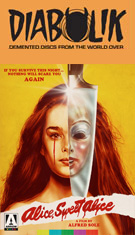
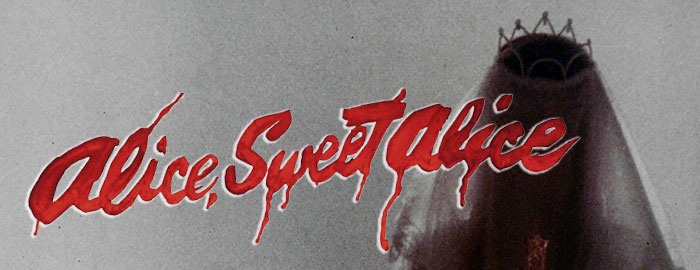
Color, 1976, 107mins. 52 secs.
Directed by Alfred Sole
Starring Linda Miller, Mildred Clinton, Paula E. Sheppard, Niles McMaster, Jane Lowry, Rudolph Willrich, Brooke Shields, Alphonso DeNoble, Michael Hardstark, Tom Signorelli, Lillian Roth
Arrow Video (UHD & Blu-ray) (US R0/RA 4K/HD), 88 Films (Blu-ray & DVD) (UK R0 HD/PAL) / WS (1.85:1) (16:9), Anchor Bay, Henstooth (DVD) (US R0 NTSC) / WS (1.85:1)
A 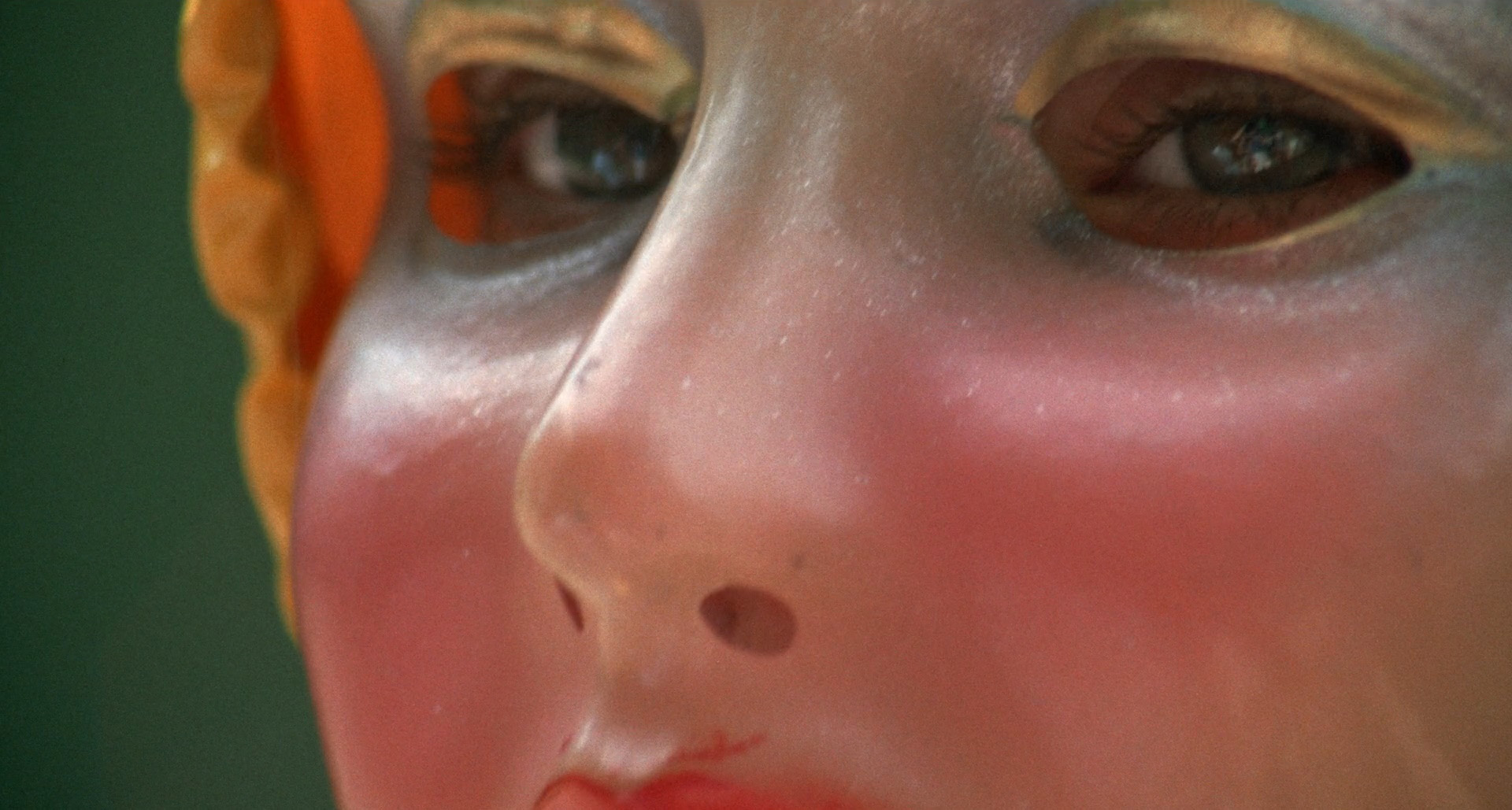 bona fide case of capturing
bona fide case of capturing 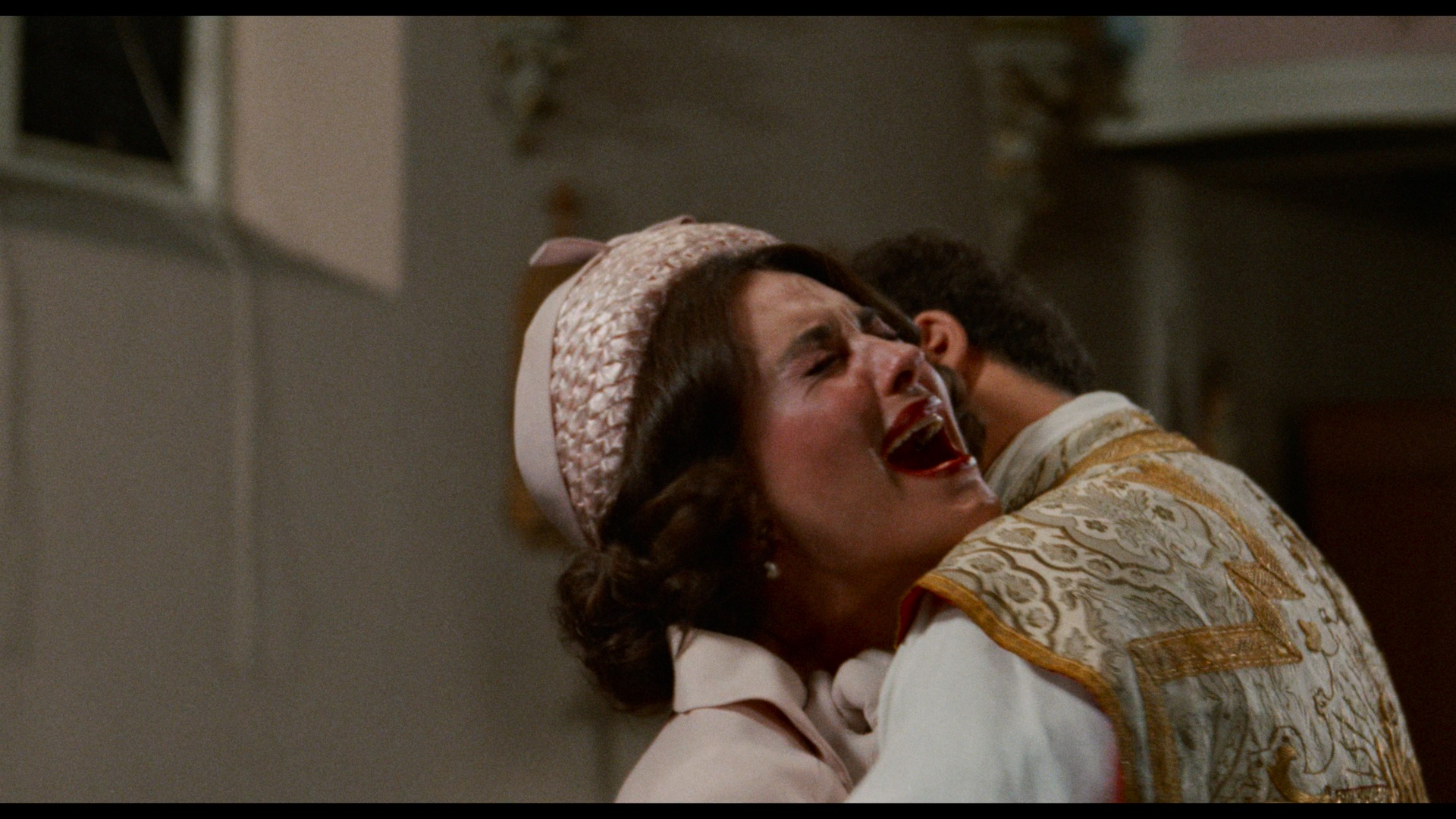 cinematic lightning in a bottle, this New Jersey-shot precursor to the slasher craze is an example of every element aligning perfectly to create one of the best horror films of the '70s, American or otherwise. Originally made as Communion and later issued under its most famous title, Alice, Sweet Alice (and in a reworked 1981 reissue as Holy Terror), this caustic little gem has finally managed to build a reputation for itself far outside the mere presence of child star Brooke Shields in a small supporting role.
cinematic lightning in a bottle, this New Jersey-shot precursor to the slasher craze is an example of every element aligning perfectly to create one of the best horror films of the '70s, American or otherwise. Originally made as Communion and later issued under its most famous title, Alice, Sweet Alice (and in a reworked 1981 reissue as Holy Terror), this caustic little gem has finally managed to build a reputation for itself far outside the mere presence of child star Brooke Shields in a small supporting role.
In Paterson, New Jersey in 1961, Catherine Spages (Miller), a devout young Catholic single mother, has two daughters, jealous and maladjusted Alice (Sheppard, later in Liquid Sky) and ultra-sweet but whiny Karen (Shields). While Karen prepares for her first communion, the older Alice becomes increasingly hostile and dislocated from her family. In fact, Alice often retreats to her apartment basement where she keeps cockroaches in a jar and causes various kinds of mayhem involving the other tenants. When Karen is brutally murdered at the church before receiving communion, suspicion immediately falls upon Alice. Catherine's estranged husband, Dom (McMaster of Bloodsucking Freaks fame), arrives for the funeral and becomes entangled in the twisted murder plot as more knife attacks occur.
Crammed with surprises, offbeat touches, and great dialogue, Alice can be a disorienting experience on first viewing but yields countless rewards along the way and absolutely rewards repeated viewings. Even minor characters are memorably sketched, particularly Alice's ridiculously obese neighbor, Mr. Alphonso (DeNoble, another Bloodsucking Freaks alumnus). The attack sequences remain genuinely shocking and frightening even now, with one agonizing and brilliantly sustained murder sequence stealing the show entirely just as the final act kicks in. The film's low budget actually helps it, with the unusual locations lending everything a surreal, all too believable atmosphere of religious repression and domestic tension ready to explode. Organized religion remains at the c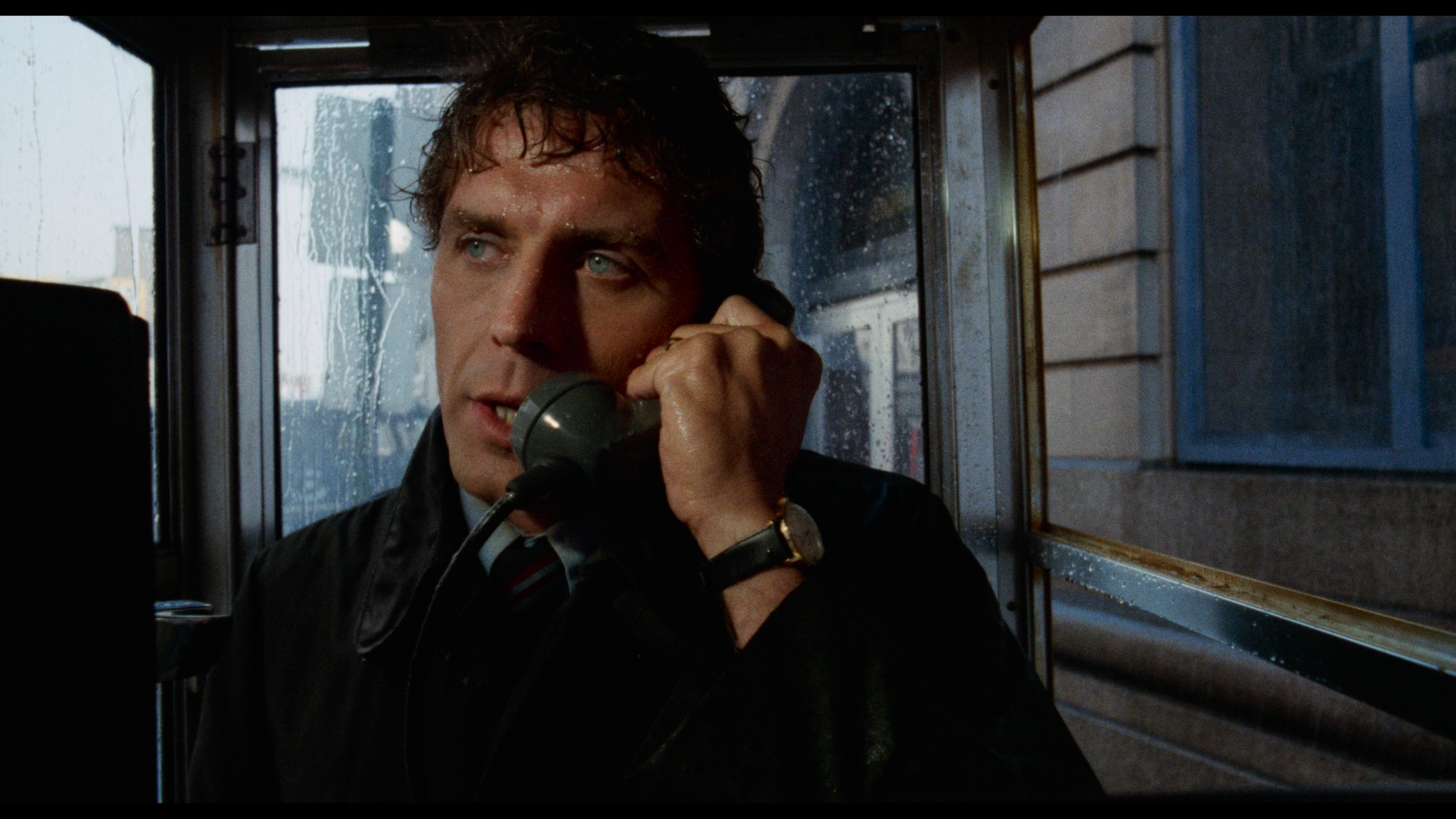 enter as the primary culprit, creating a preferential culture where favoring certain people at random over others instigates malice at every turn. The film itself chooses to treat people in the same
enter as the primary culprit, creating a preferential culture where favoring certain people at random over others instigates malice at every turn. The film itself chooses to treat people in the same 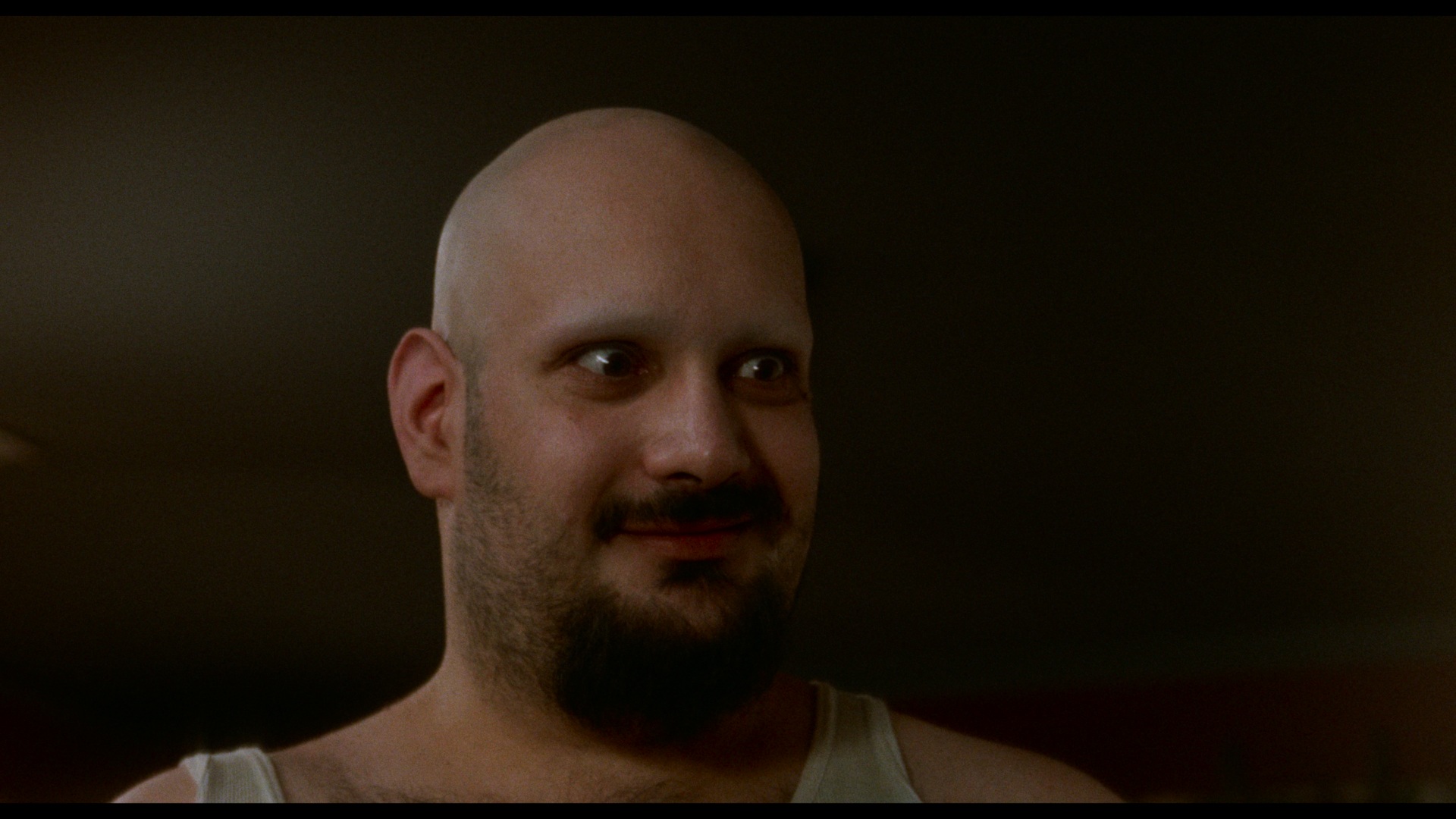 manner to drive the point home, randomly knocking off characters whether they deserve it or not.
manner to drive the point home, randomly knocking off characters whether they deserve it or not.
Assumed to be public domain in the '80s due to the failure to keep a copyright notice on circulating reissue prints, Alice, Sweet Alice was dumped onto VHS by several different cheapo companies in substandard presentations with major distortion issues. Sole himself came to the film's rescue with a 1997 laserdisc edition from The Roan Group, which was also the film's first letterboxed release (though not accurately framed) but suffered from some seriously oversaturated colors that bled all over the place. Though similar on the surface, Anchor Bay's DVD from 1999 improved on the previous Roan Group laserdisc by toning down much of the distorted colors. The source materials were also in much better shape, freed from the distracting speckles and other damage littering the laserdisc, and the 1.85:1 framing (not anamorphic) is much more accurate than the squeezed, unsatisfying Roan presentation. The laserdisc was touted as a "director's cut" on the packaging and the print itself, which meant Sole actually tightened the film a little bit as he claimed the editing was rushed and incomplete when the film was originally released. As noted in Video Watchdog, the most significant cut removes a phone call from Dom's current wife, a deletion that seemed to sharply divide the film's admirers and has since been undone. Overall the fleeting trims amount to about a minute and a half, allowing Sole to copyright this print and finally reclaim the film as his own. The Anchor Bay DVD reinstates the footage, allowing it to be promoted as the "uncut version," and the audio commentary with Sole, editor Ed Salier, and Bill Lustig (who worked on the film for three weeks) has been readjusted accordingly. The commentary provides some nice anecdotes about the making of the film, including a revelation of Shepherd's real age at the time, trivia about the challenges of wrangling "cock-a-roaches," and an explanation for the absence of music over the end credits (which is tweaked here with the Klute-inspired score looped back again). Unfortunately, Sole was never again given the opportunity to shine like he does here; Alice was actually his second film, made after a spooky hardcore porn effort called Deep Sleep, and his subsequent efforts included the surreal Vanity vehicle Tanya's Island and the slasher parody Pandemonium. The DVD also replicates the extras from the Roan disc, namely the 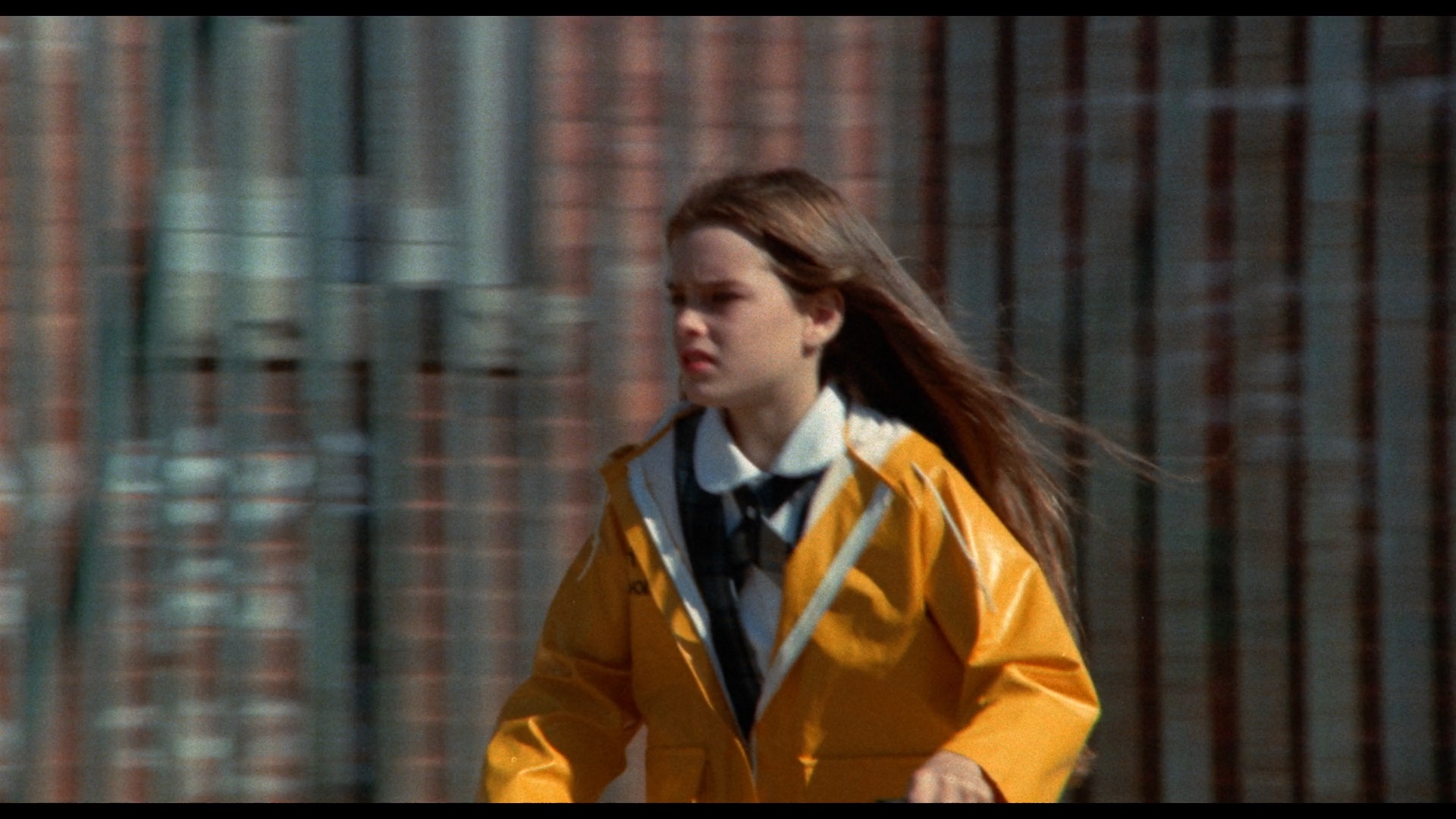 alternate Communion opening credits and a collection
alternate Communion opening credits and a collection 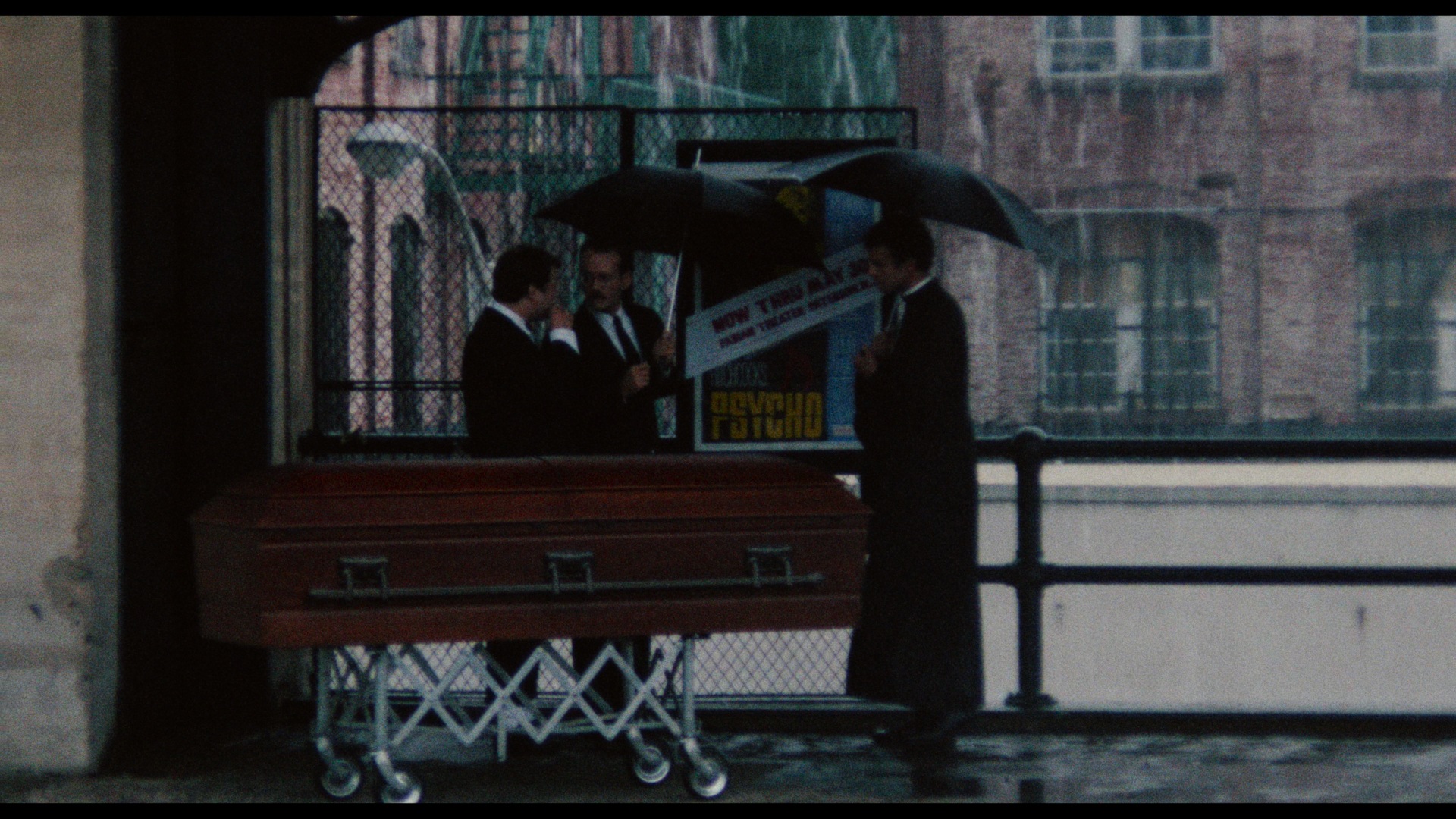 of stills from the film. The same transfer was later reissued in 2007 for a couple of years from Henstooth.
of stills from the film. The same transfer was later reissued in 2007 for a couple of years from Henstooth.
In 2014, 88 Films issued the film on DVD as part of its "Slasher Classics Collection" line, basically blowing up the older Anchor Bay transfer to fill the frame on 16x9 sets; it was also the first time the uncut version had been seen in the U.K. in several years, with the prior Tartan release marred by the deletion of a few seconds of rough kitten grabbing. In the interim the rights to the film apparently passed over in the U.S. to Warner Bros. when it inherited the library of Allied Artists, the film's original American distributor. Rumors abounded that the studio was working on an official release, which first manifested in a single airing on TCM HD that looked fairly good but turned out to be the heavily edited reissue version (not available on video anywhere but dropping several scenes).
Flash forward to 2018 with the film's first Blu-ray release in the world, a much-touted restoration from 88 Films. The region-free disc was first released as a website exclusive and featured a considerable amount of additional detail than before with previously unseen textures now evident throughout, especially in the interior scenes filled with lace and polished wood. More image info is visible on the edge and the colors are still fairly subdued and a bit cooler here. The English LPCM mono audio was also substantially improved, with so much clarity now that it becomes glaringly obvious that DeNoble was looped (by another actor?) in most of his scenes. Optional English SDH subtitles are included, which means this is likely the first captioned release of the film anywhere as well. The commentary track is included again here, plus the ridiculous Holy Terror trailer (which prominently uses a photo of a much older Shields), the Communion British TV spot (with Tintorera!), a gallery (4m55s) of posters and other ephemera from around the world, and a 5m20s restoration demonstration that absolutely should not be watched until you've already seen the film!
However, a better version was yet to come with the North American Blu-ray from Arrow Video in 2019, finally culled from first-generation source material thanks to access to the original camera negative (under the original Communion title) held by Warner Bros. Anyone familiar with this film's history will be 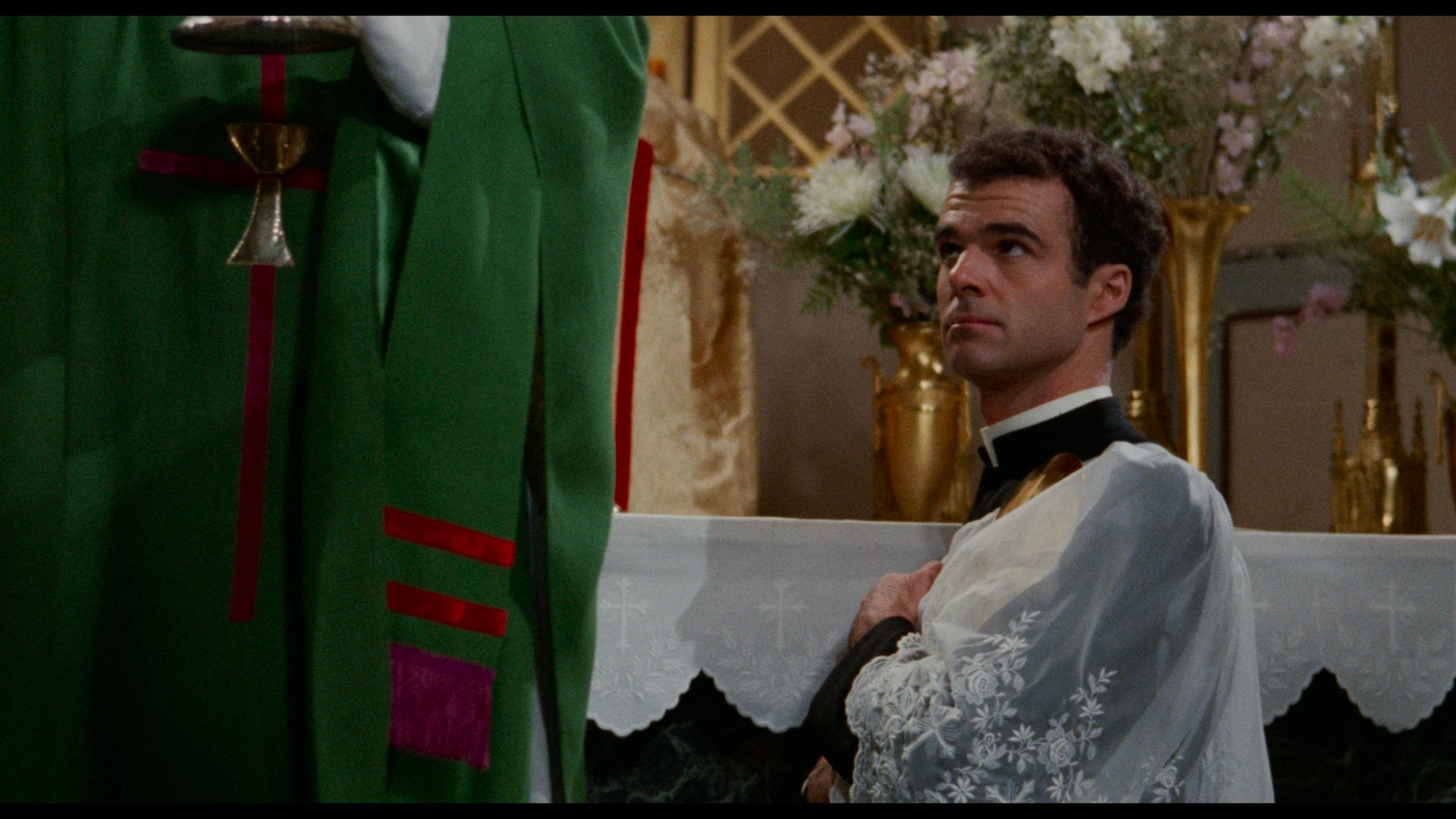 staggered at how good it looks here, with far more image information visible here than before (especially at the bottom) and, at last,
staggered at how good it looks here, with far more image information visible here than before (especially at the bottom) and, at last, 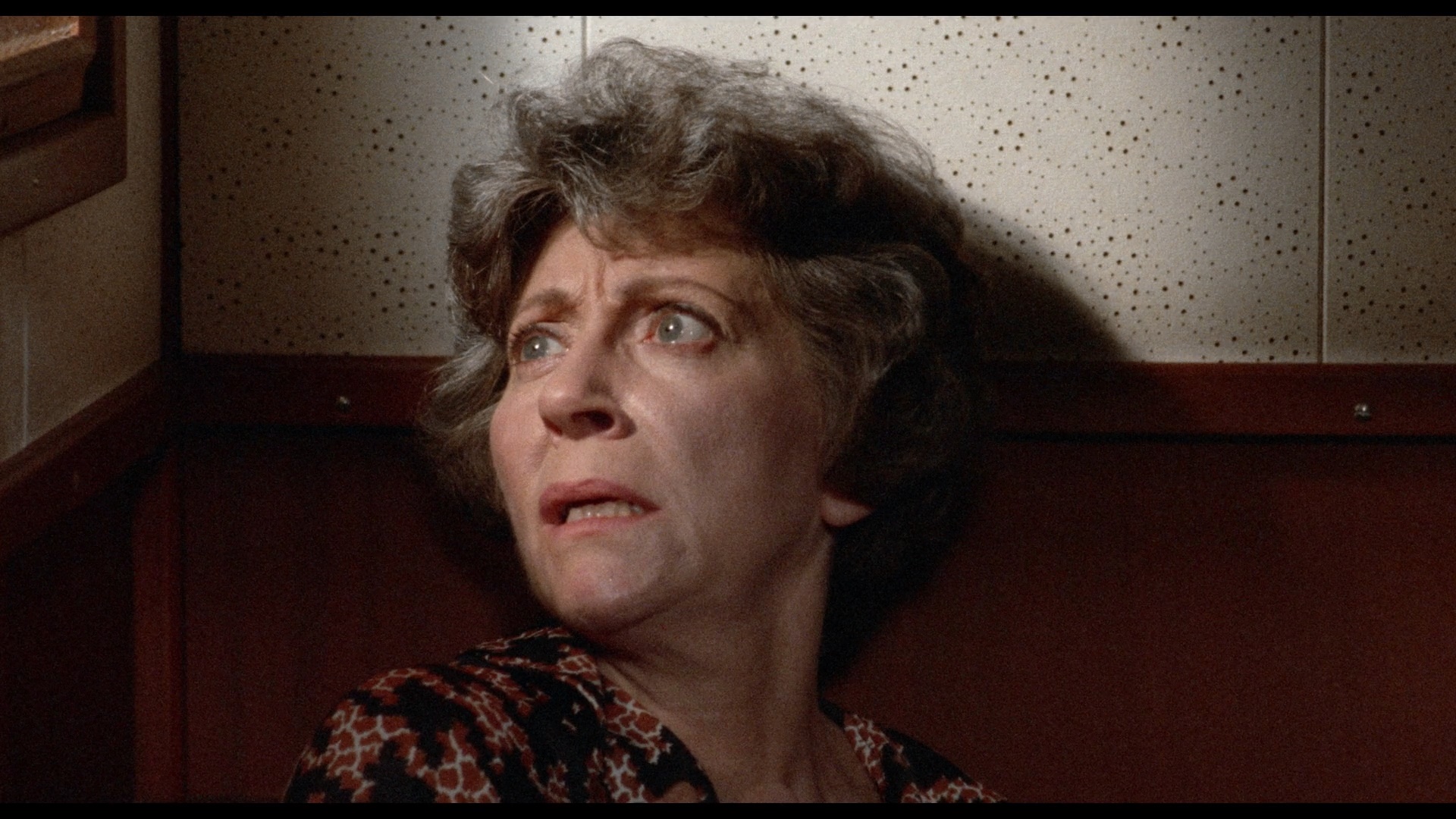 natural flesh tones. It's really a remarkable upgrade and proof that this film is as stylish as anything else turned out around that period. The LPCM English mono track (with optional English SDH subtitles) is also clearer than ever before, giving more range to the music and finally dispensing with that harsh, distressed sound to the dialogue recording. The preexisting Sole/Salier commentary is ported over here, but you also get an excellent, thorough new track by Richard Harland Smith, who presents an overview of the film as a significant genre entry and a key piece in the careers involved from Shields to Sole himself. He does a fine job of balancing historical trivia with insights into the film's status as a regional horror landmark (thanks to its shooting in Paterson, New Jersey) and a number of odd or mysterious elements in both its themes and production details, not to mention its strong ties to the theater community. A new interview with Sole, "First Communion" (18m42s), covers his movement into directing including his very controversial debut film and charts the development of the story, the arrangements with Paterson to get the film funded and produced, and the background of some of the players. (DeNoble's is a doozy.) For some reason there's a ton of heavy digital filtering on Sole during his interview footage, but it's well worth checking out and includes a barrage of great vintage newspaper clippings to boot. "Alice on My Mind" (14m59s) with composer Stephen Lawrence is a fascinating peek into how he built the various themes to the very memorable score (with live piano demonstrations), with plenty of background information included about his musical career, too. In his first extra ever for one of his films, McMaster appears for "In the Name of the Father" (16m2s) for a Skype chat about his background, his entry into acting after military service and other unrelated careers, the mechanics of his most memorable scene, Miller's turbulent divorce from Jason Miller, and a fair bit about his role in that other notorious horror film just after this film (apparently under yet another title in the beginning, The Horrors of Dr. Sardu). His thoughts on Catholicism and Sole's attitude at the time are quite fascinating as well, and again, keep an eye on the newspaper clippings (including one announcing this as a made-for-TV project, weirdly enough). Then "Lost Childhood: The
natural flesh tones. It's really a remarkable upgrade and proof that this film is as stylish as anything else turned out around that period. The LPCM English mono track (with optional English SDH subtitles) is also clearer than ever before, giving more range to the music and finally dispensing with that harsh, distressed sound to the dialogue recording. The preexisting Sole/Salier commentary is ported over here, but you also get an excellent, thorough new track by Richard Harland Smith, who presents an overview of the film as a significant genre entry and a key piece in the careers involved from Shields to Sole himself. He does a fine job of balancing historical trivia with insights into the film's status as a regional horror landmark (thanks to its shooting in Paterson, New Jersey) and a number of odd or mysterious elements in both its themes and production details, not to mention its strong ties to the theater community. A new interview with Sole, "First Communion" (18m42s), covers his movement into directing including his very controversial debut film and charts the development of the story, the arrangements with Paterson to get the film funded and produced, and the background of some of the players. (DeNoble's is a doozy.) For some reason there's a ton of heavy digital filtering on Sole during his interview footage, but it's well worth checking out and includes a barrage of great vintage newspaper clippings to boot. "Alice on My Mind" (14m59s) with composer Stephen Lawrence is a fascinating peek into how he built the various themes to the very memorable score (with live piano demonstrations), with plenty of background information included about his musical career, too. In his first extra ever for one of his films, McMaster appears for "In the Name of the Father" (16m2s) for a Skype chat about his background, his entry into acting after military service and other unrelated careers, the mechanics of his most memorable scene, Miller's turbulent divorce from Jason Miller, and a fair bit about his role in that other notorious horror film just after this film (apparently under yet another title in the beginning, The Horrors of Dr. Sardu). His thoughts on Catholicism and Sole's attitude at the time are quite fascinating as well, and again, keep an eye on the newspaper clippings (including one announcing this as a made-for-TV project, weirdly enough). Then "Lost Childhood: The 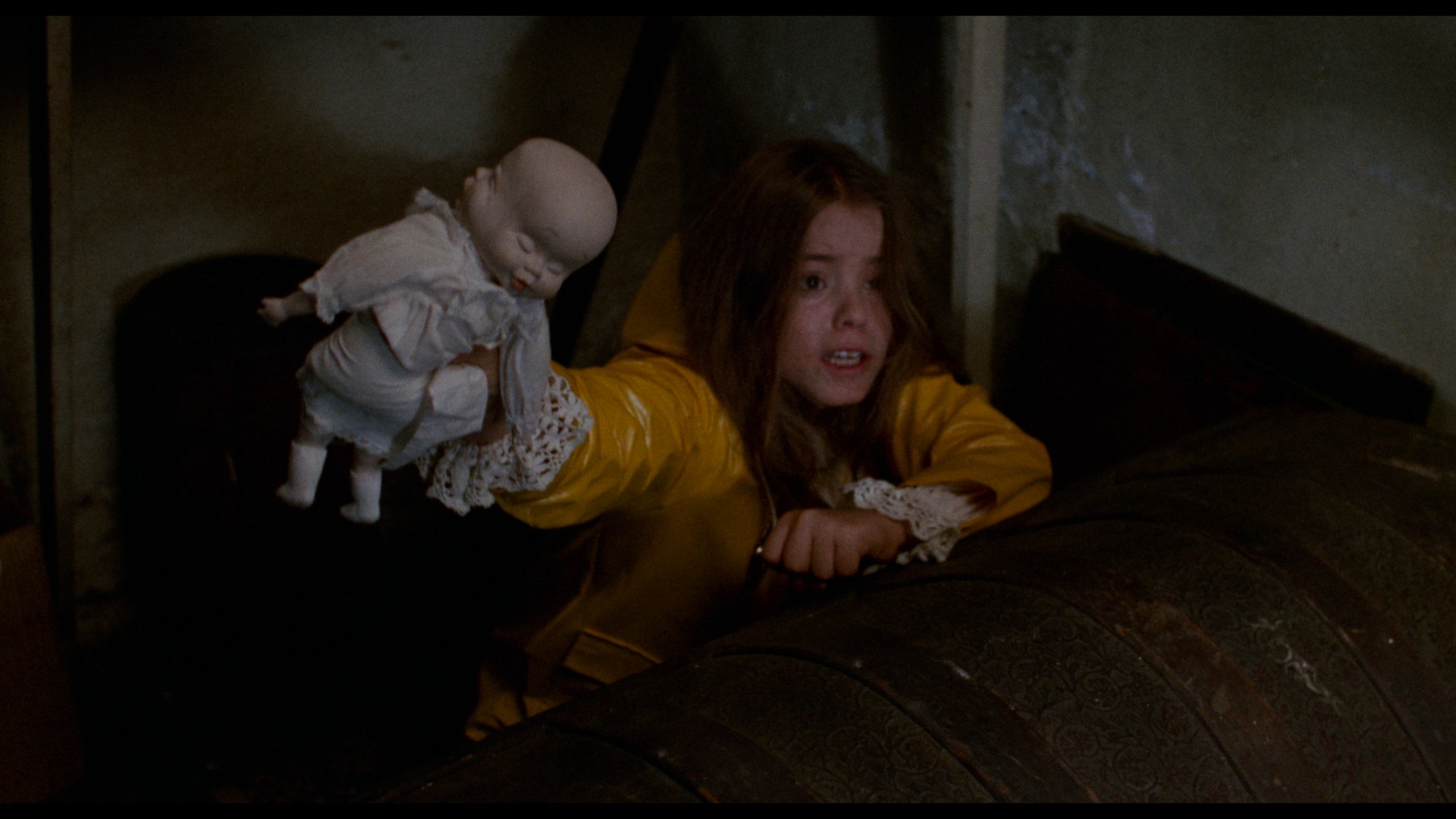 Locations of Alice, Sweet Alice" (16m2s) features Fangoria's Michael Gingold as your guide for a look at the film's most prominent and familiar locations, some of which have changed their function rather drastically over the ensuing decades or been demolished entirely. "Sweet Memories: Dante Tomaselli on Alice, Sweet Alice" (11m18s) features Sole's cousin,
Locations of Alice, Sweet Alice" (16m2s) features Fangoria's Michael Gingold as your guide for a look at the film's most prominent and familiar locations, some of which have changed their function rather drastically over the ensuing decades or been demolished entirely. "Sweet Memories: Dante Tomaselli on Alice, Sweet Alice" (11m18s) features Sole's cousin, 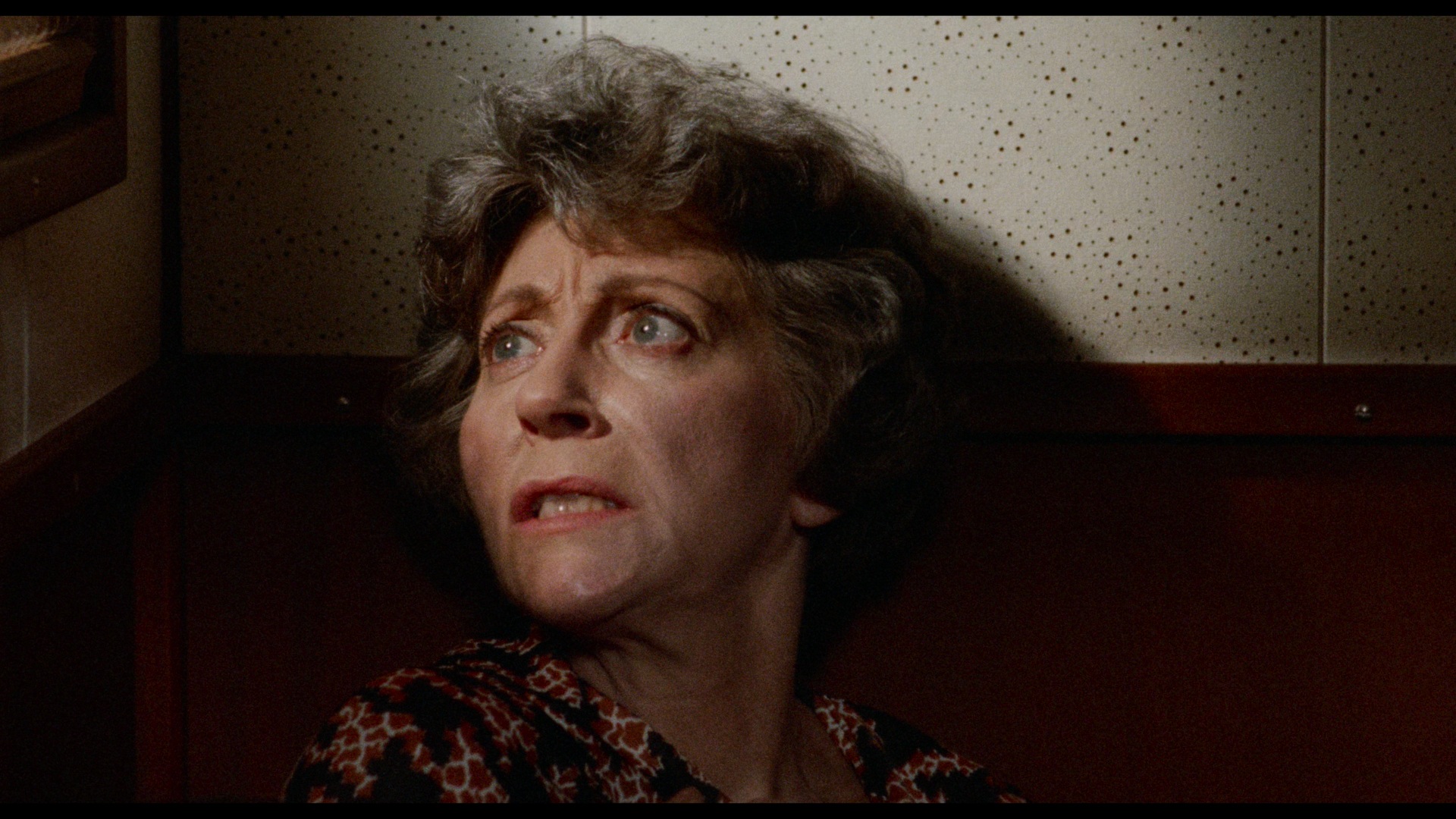 Dante Tomaselli (a filmmaker in his own right with films like Desecration), chats about his own awareness of the film and its impact on his life and career, his long-gestating plans to do a remake, and his own take on religion and the challenges of revisiting a film known to horror fans for so many years. A deleted scenes section (2m45s) features two brief dialogue segments (with no existing audio) cut from the film, followed by the reissue credits as Alice, Sweet Alice, a Holy Terror reissue trailer playing up Brooke Shields to a ridiculous degree, a UK TV spot, a gallery of 41 stills and promotional items including various editions of the tie-in paperback, and tucked away at the very end, the shorter Holy Terror cut (107m13s). Also featured as a BD-Rom option is the original screenplay as a PDF, which makes for very illuminating reading as it follows the same storyline but has a few significant differences along the way including a more straightforward, traditional ending. The first pressing also comes with an insert booklet featuring liner notes by Michael Blyth.
Dante Tomaselli (a filmmaker in his own right with films like Desecration), chats about his own awareness of the film and its impact on his life and career, his long-gestating plans to do a remake, and his own take on religion and the challenges of revisiting a film known to horror fans for so many years. A deleted scenes section (2m45s) features two brief dialogue segments (with no existing audio) cut from the film, followed by the reissue credits as Alice, Sweet Alice, a Holy Terror reissue trailer playing up Brooke Shields to a ridiculous degree, a UK TV spot, a gallery of 41 stills and promotional items including various editions of the tie-in paperback, and tucked away at the very end, the shorter Holy Terror cut (107m13s). Also featured as a BD-Rom option is the original screenplay as a PDF, which makes for very illuminating reading as it follows the same storyline but has a few significant differences along the way including a more straightforward, traditional ending. The first pressing also comes with an insert booklet featuring liner notes by Michael Blyth.
In 2025, Arrow upgraded the film to UHD with a new restoration from the camera negative offering the three extant versions of the film via seamless branching, with their respective title sequences (Communion, Alice, and Holy Terror). Though the running times are essentially identical, this means you get the slightly stronger Communion cut, which has bloodier footage in two bits (some mouth violence involving a brick and a shot of the final murder victim spitting blood) with the other two options reflecting the more widely seen version. Image-wise this improves on the already superb Blu-ray with the added resolution increasing the level of detail, finer film grain, and deeper black levels, while the mono track is the same immaculate quality as before with English SDH subtitles. All of the extras (commentaries, featurettes, etc.) have been ported over here, and a new video comparison shows a side-by-side demo of the editorial tweaks made between the two cuts found on the disc.
ARROW FILMS (UHD)
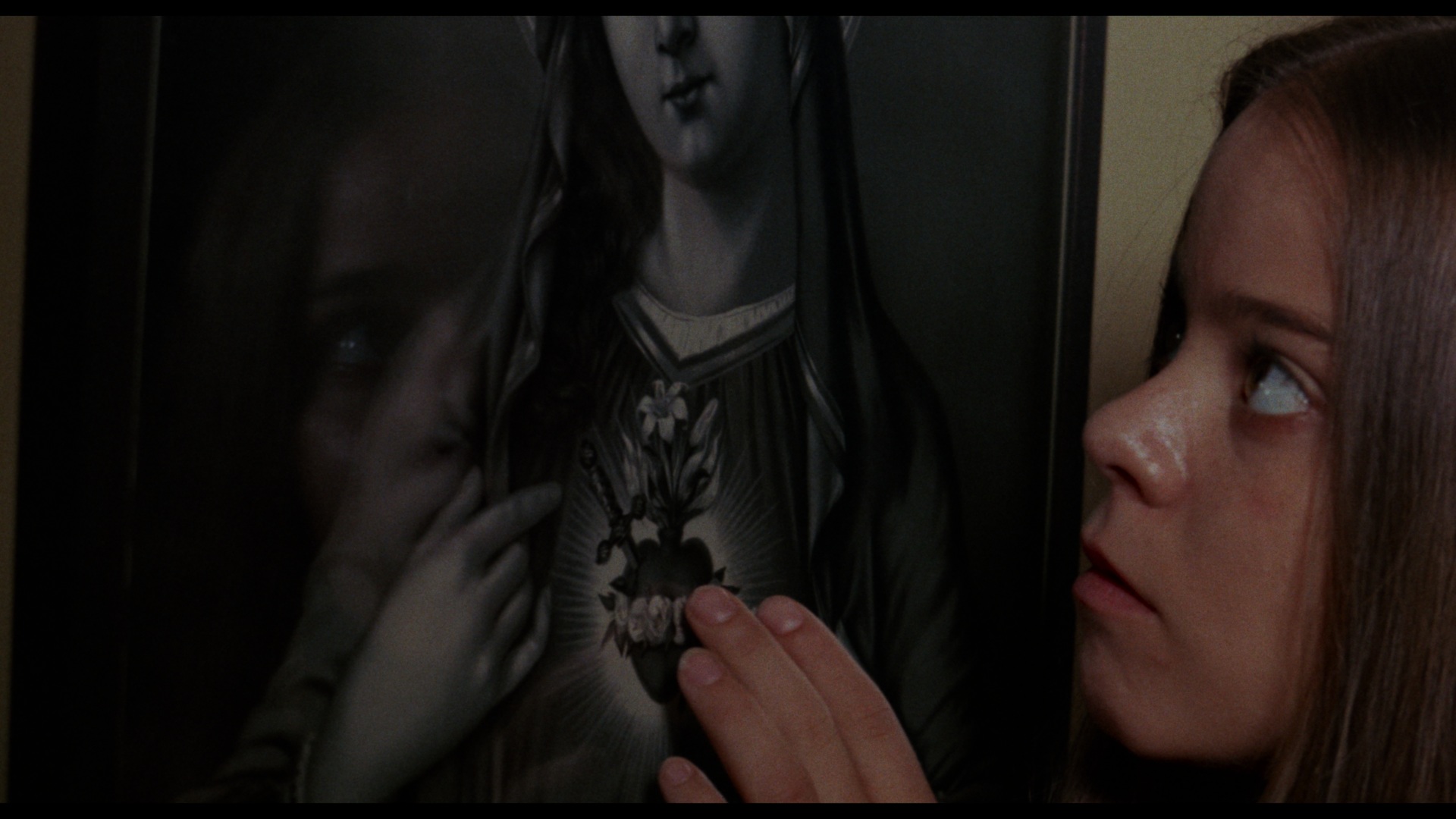
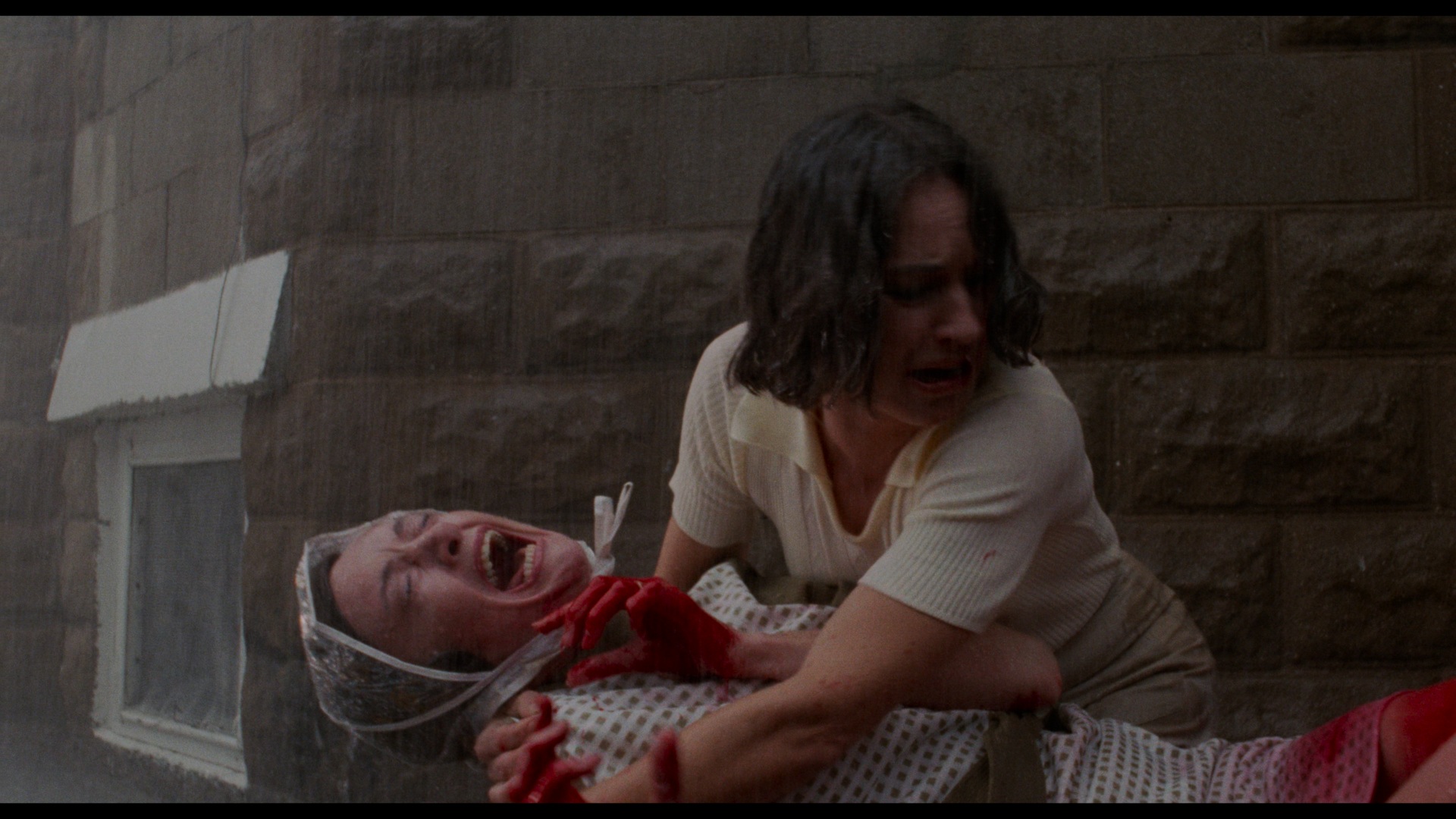
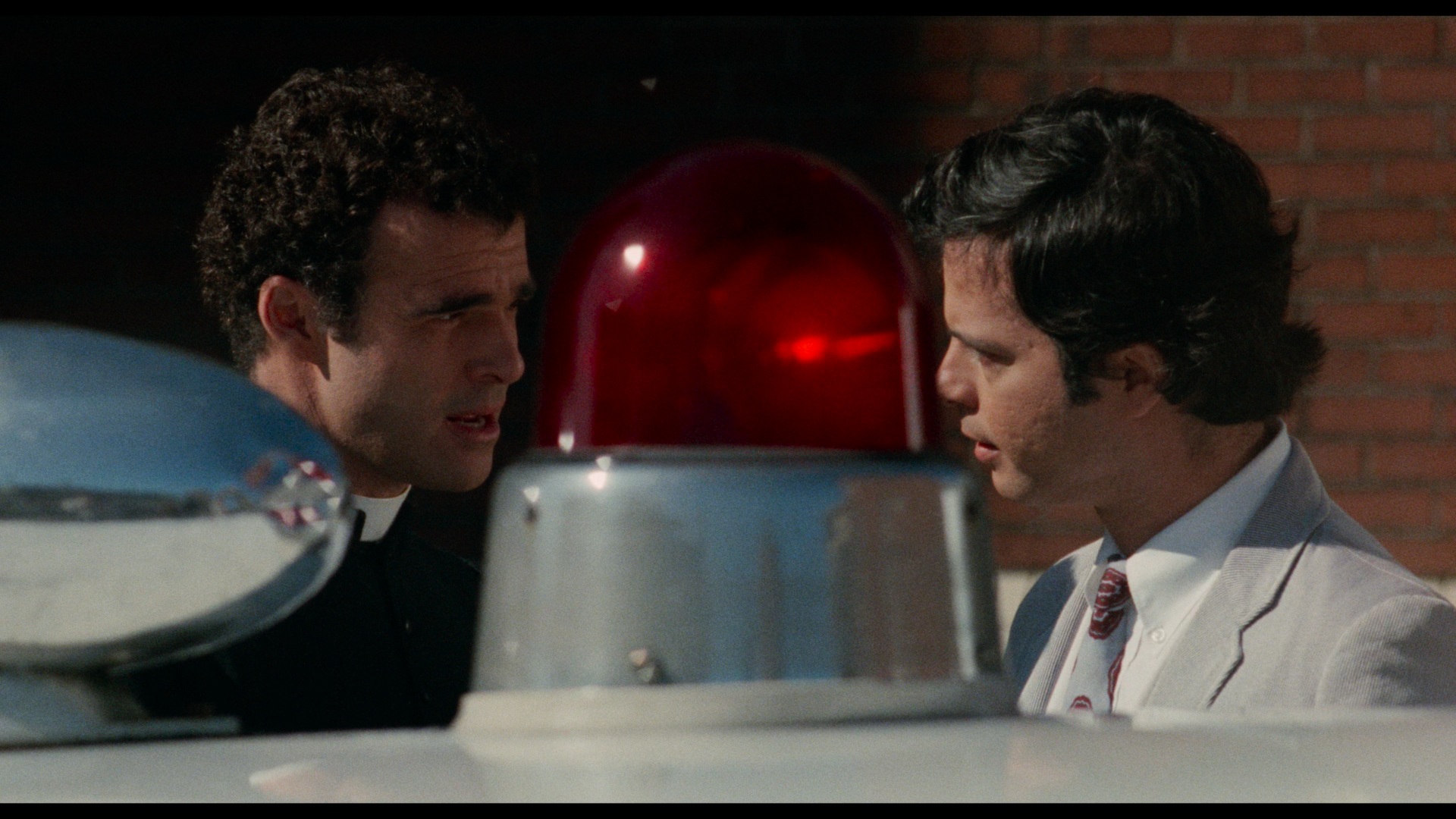
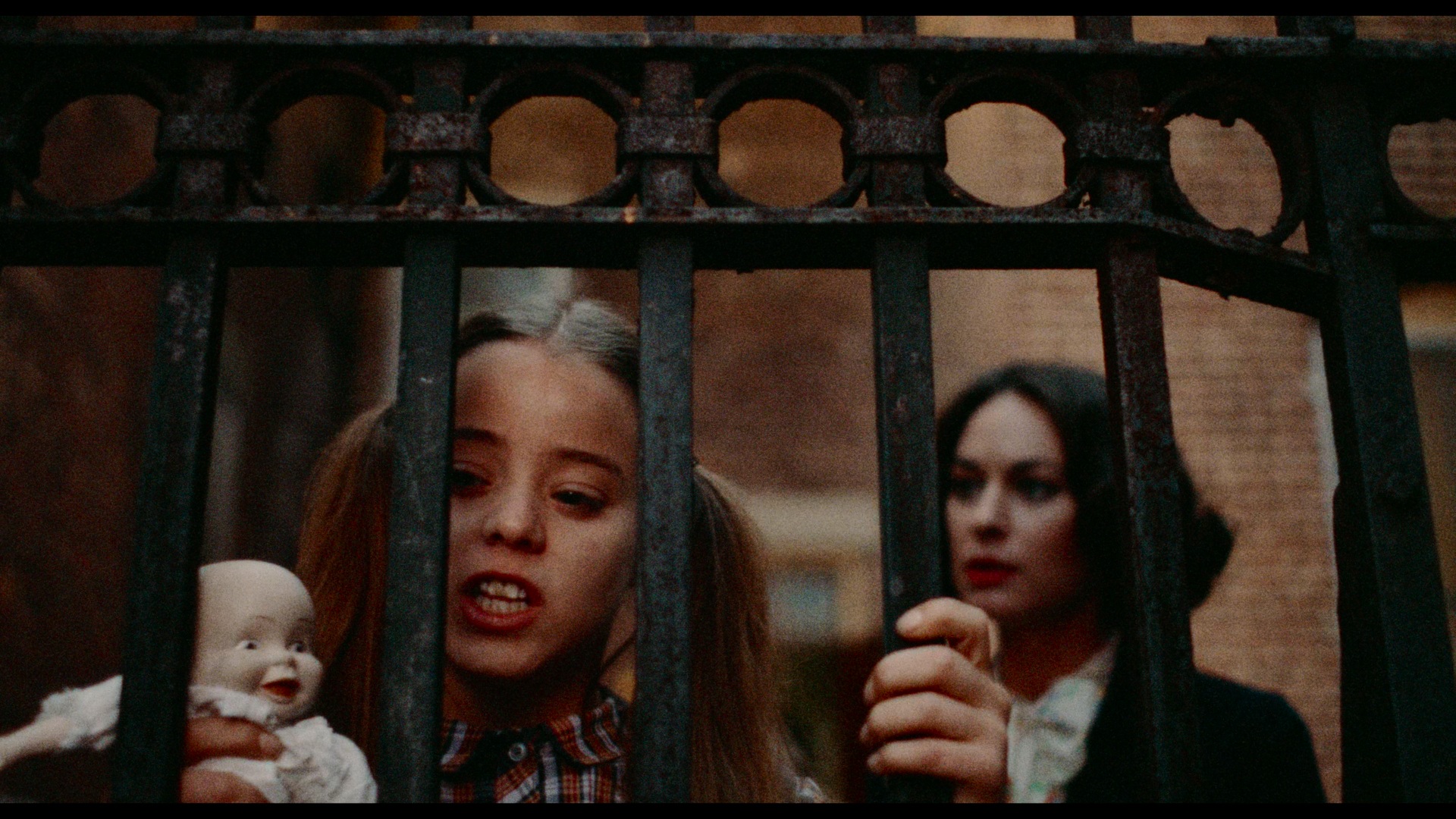
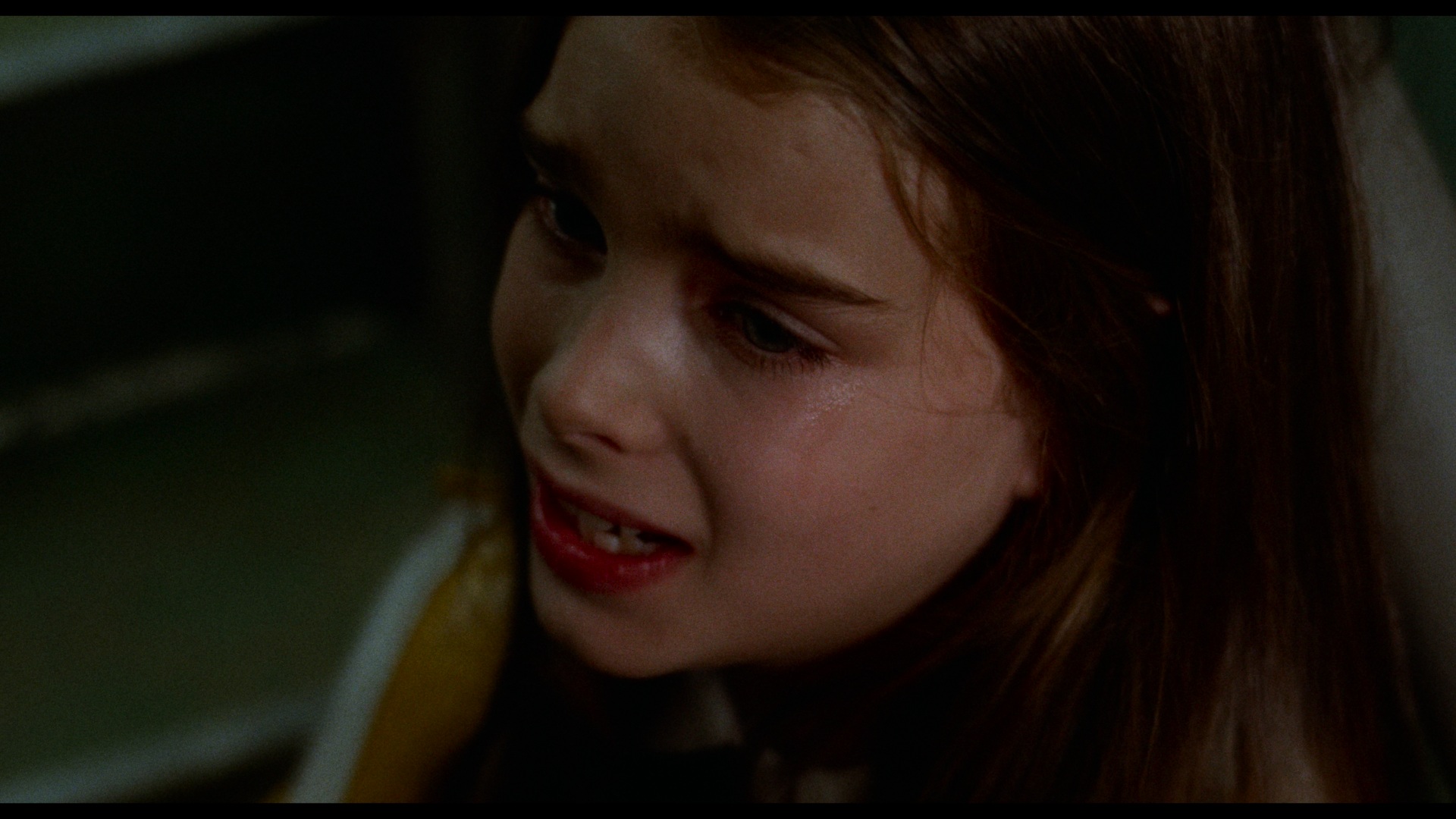
ARROW FILMS (BLU-RAY)
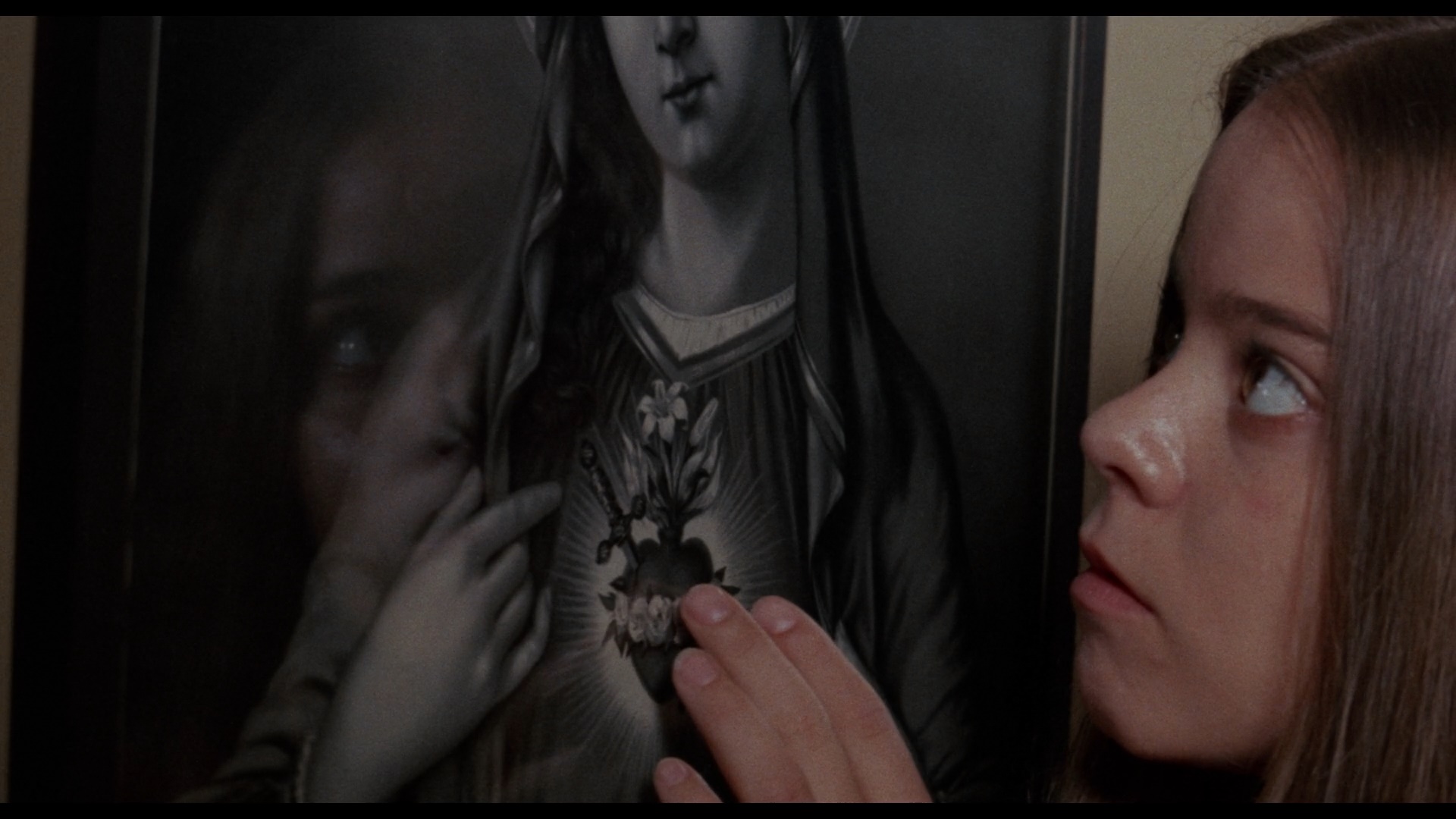
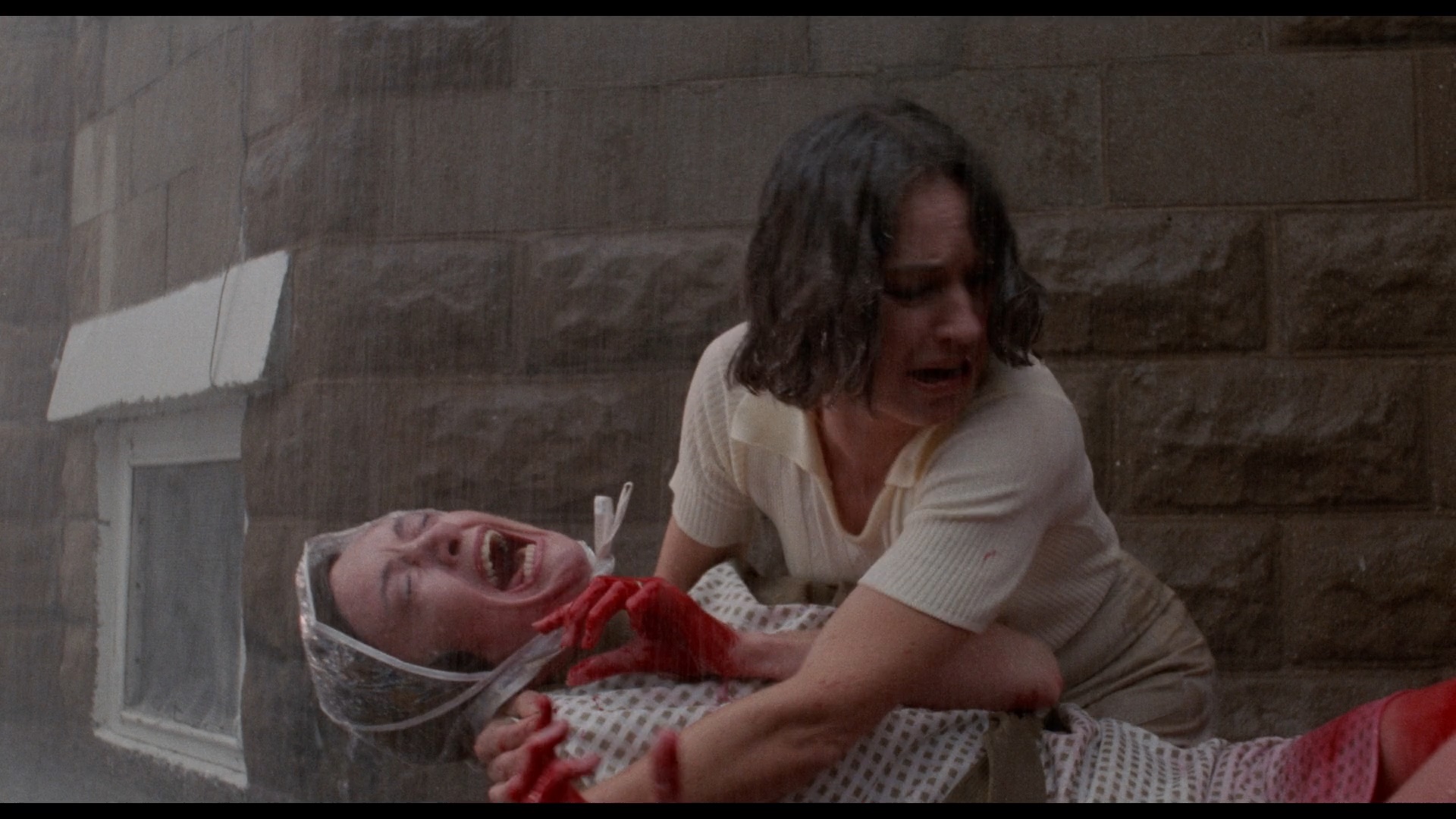
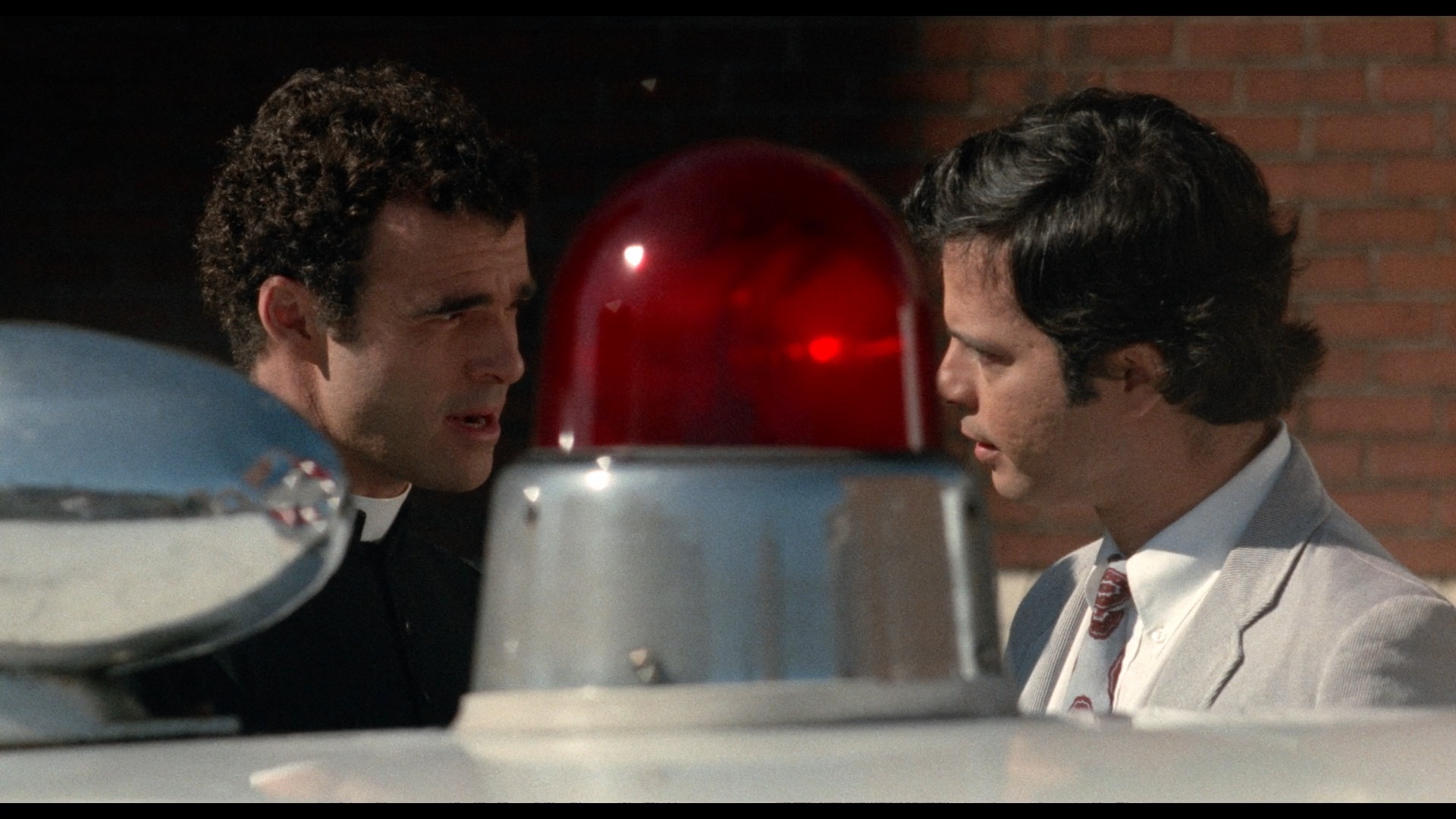
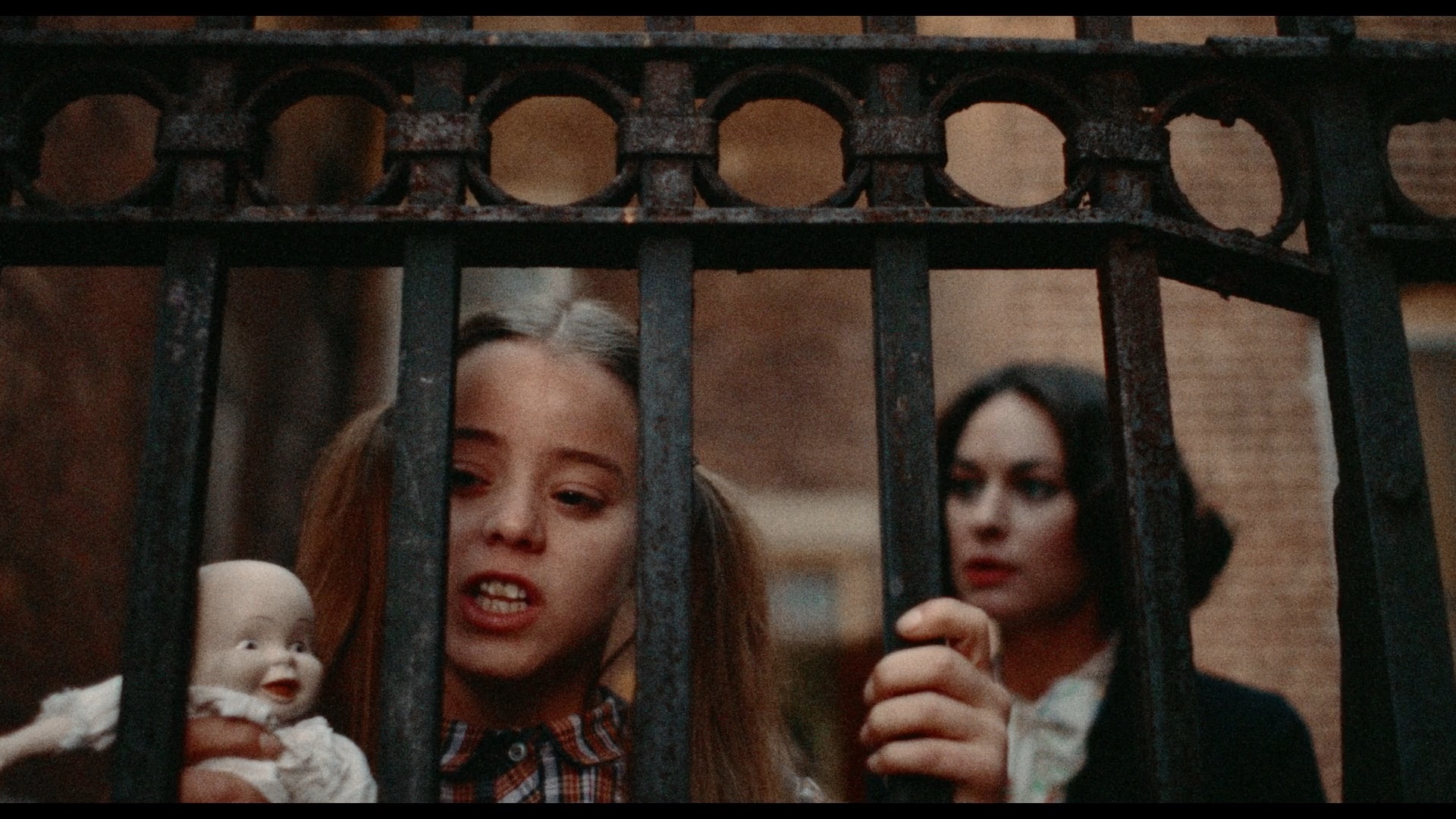
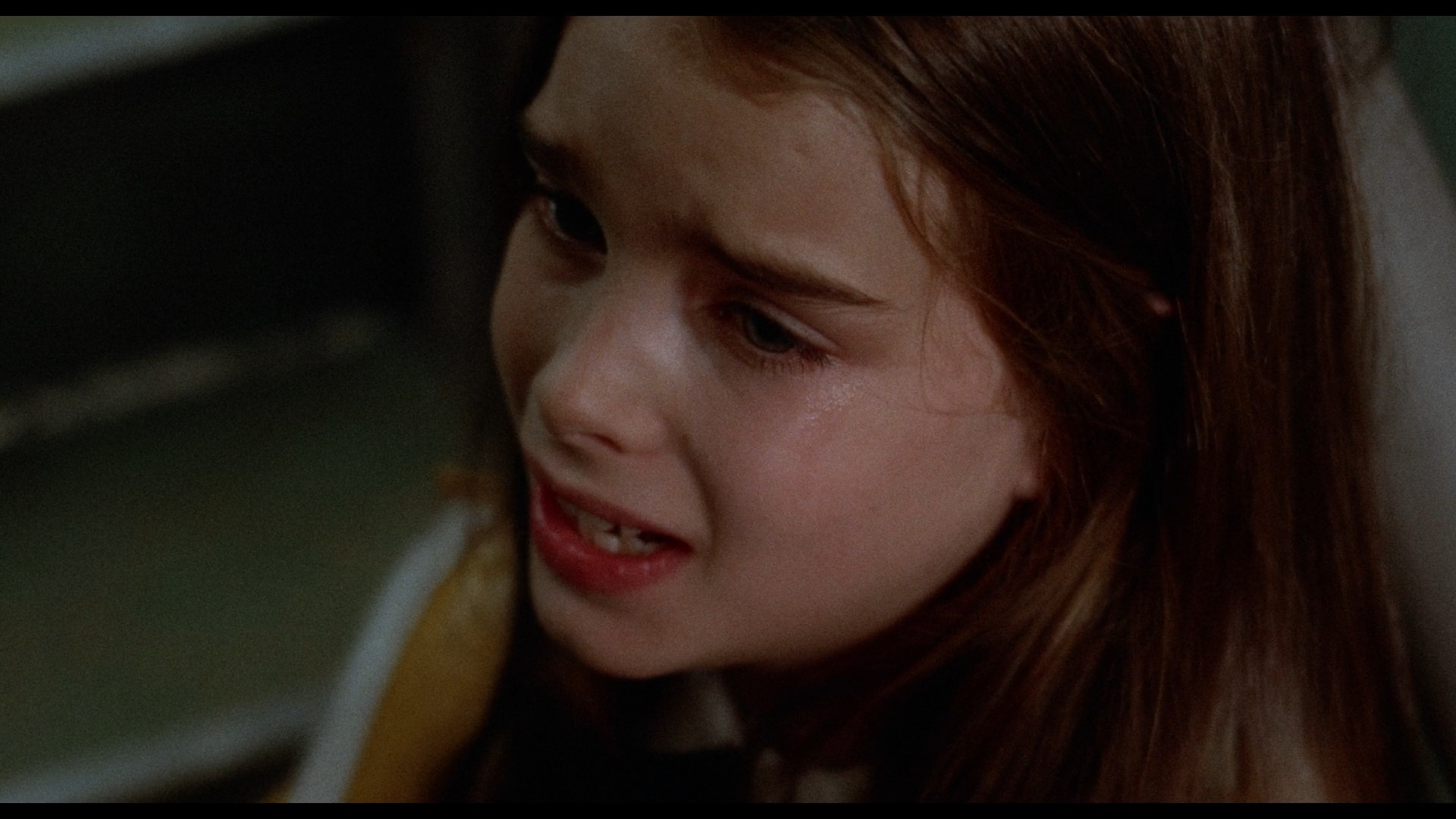
88 FILMS (BLU-RAY)
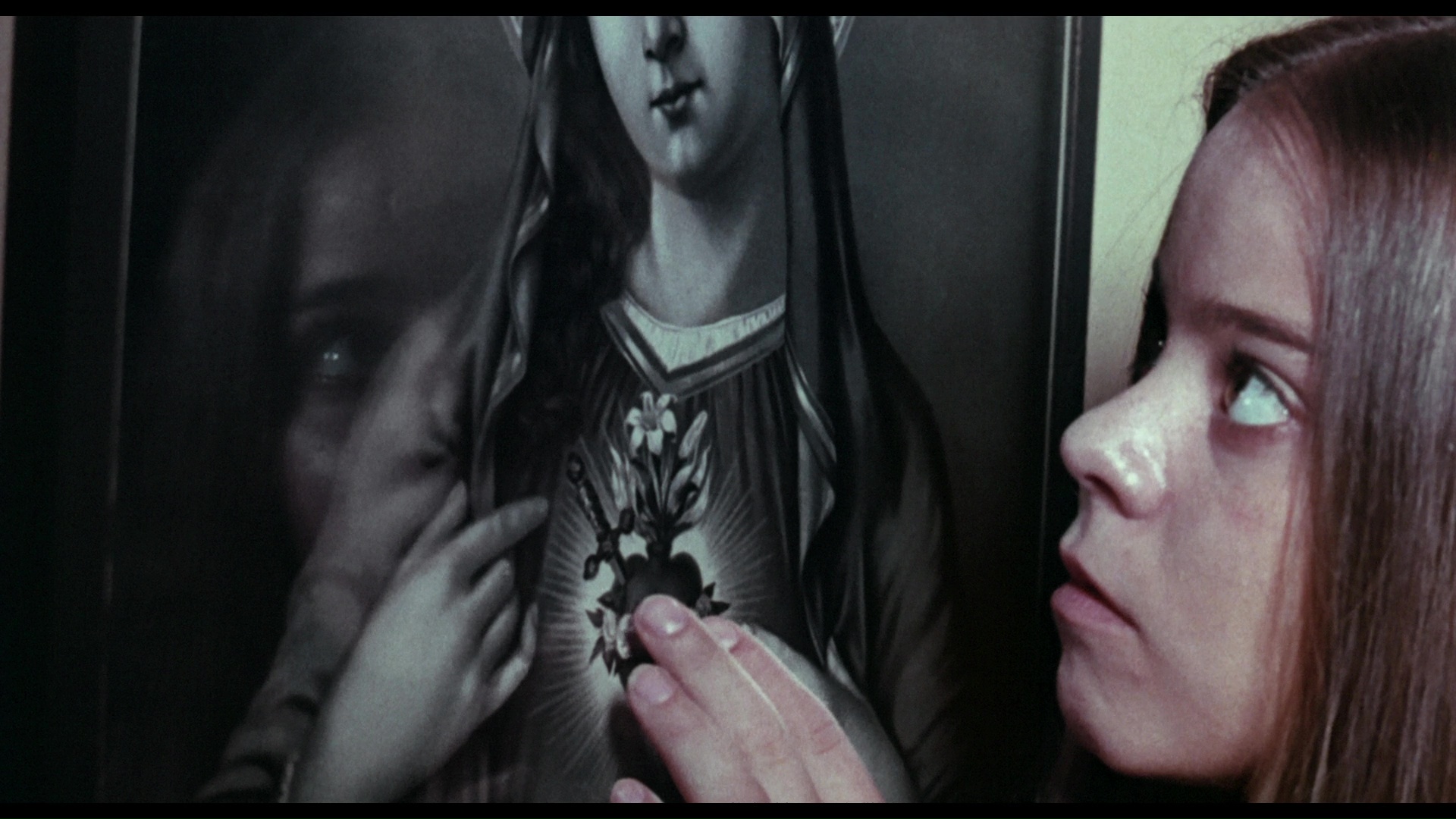
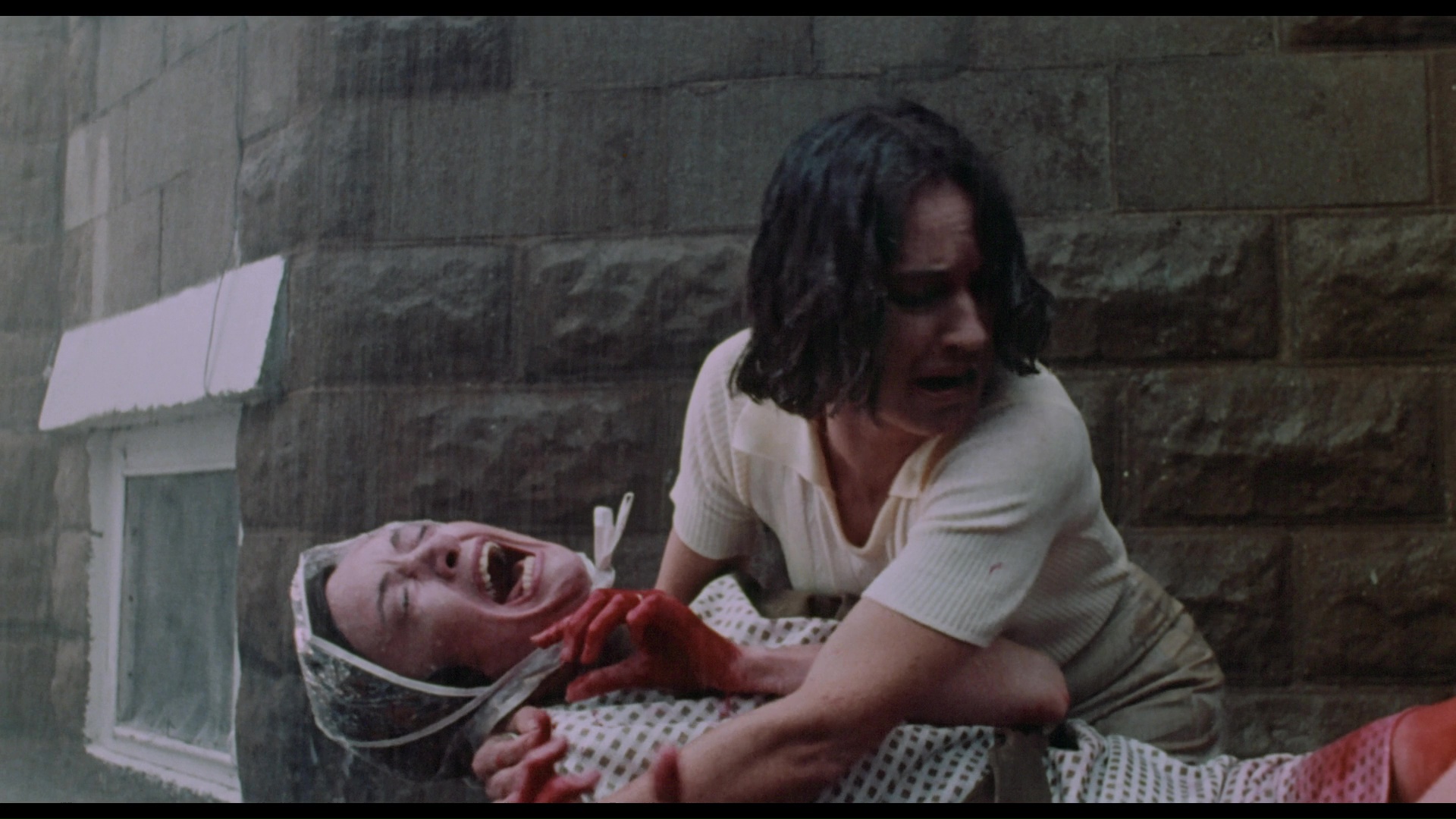
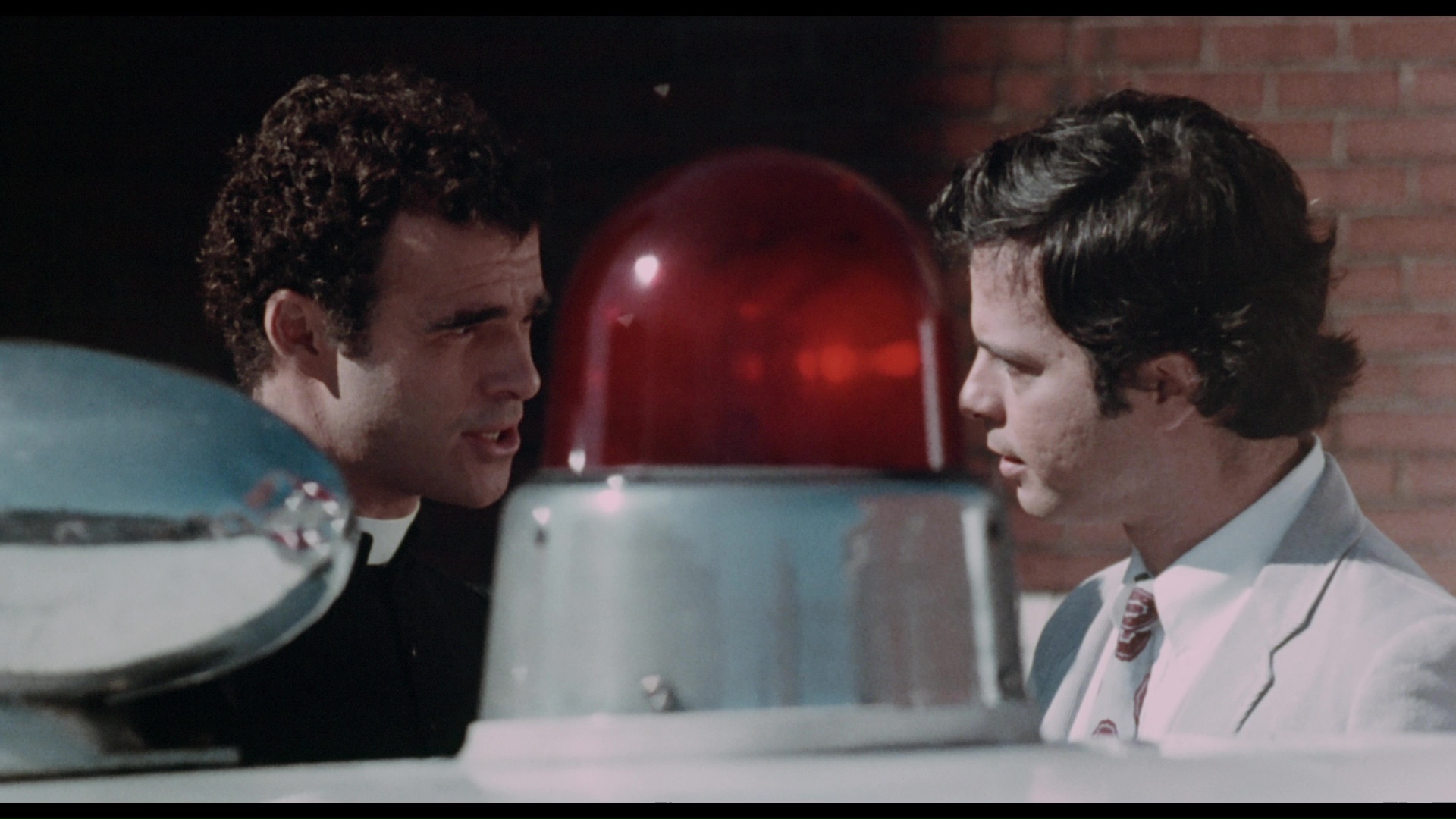
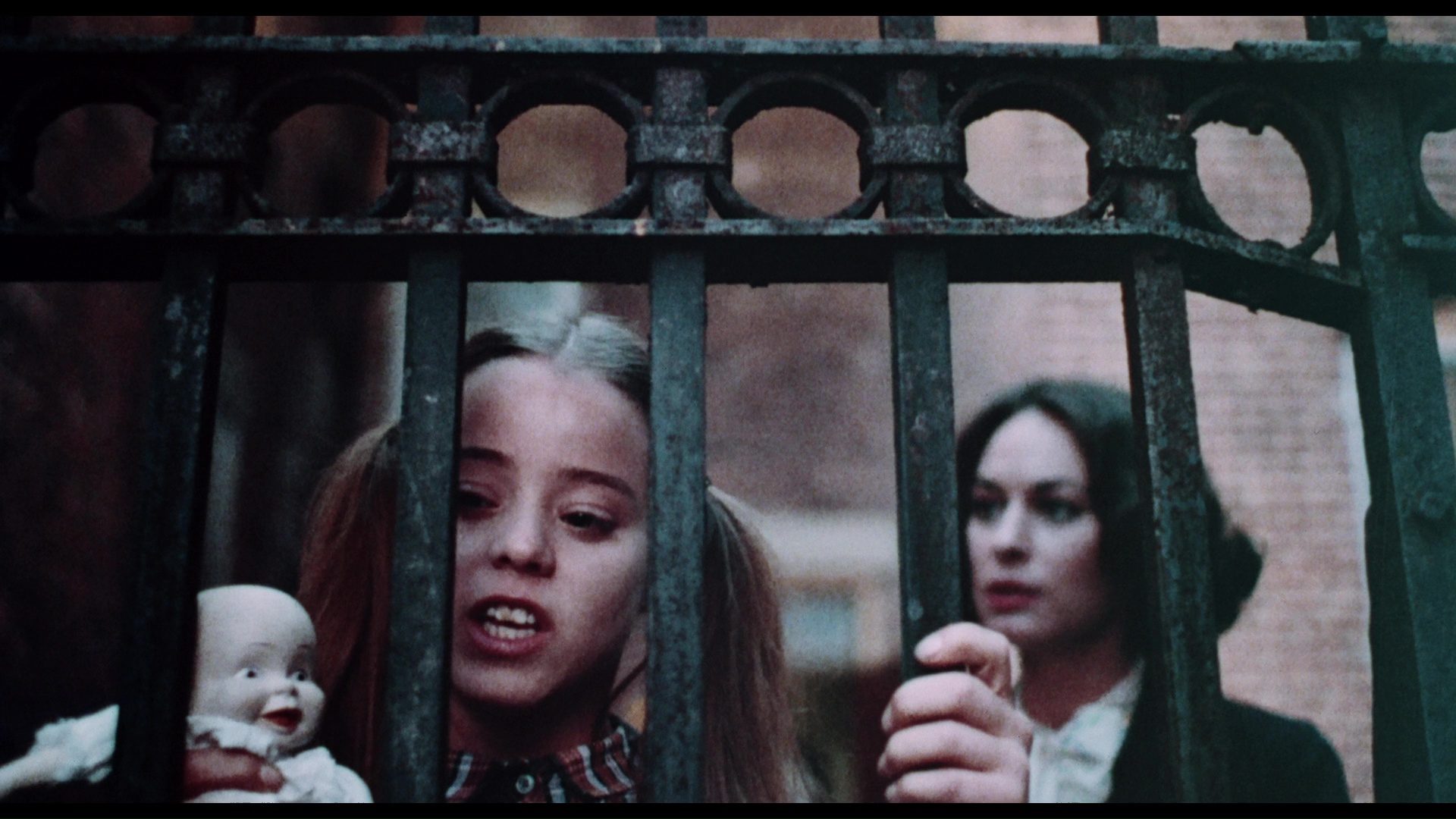
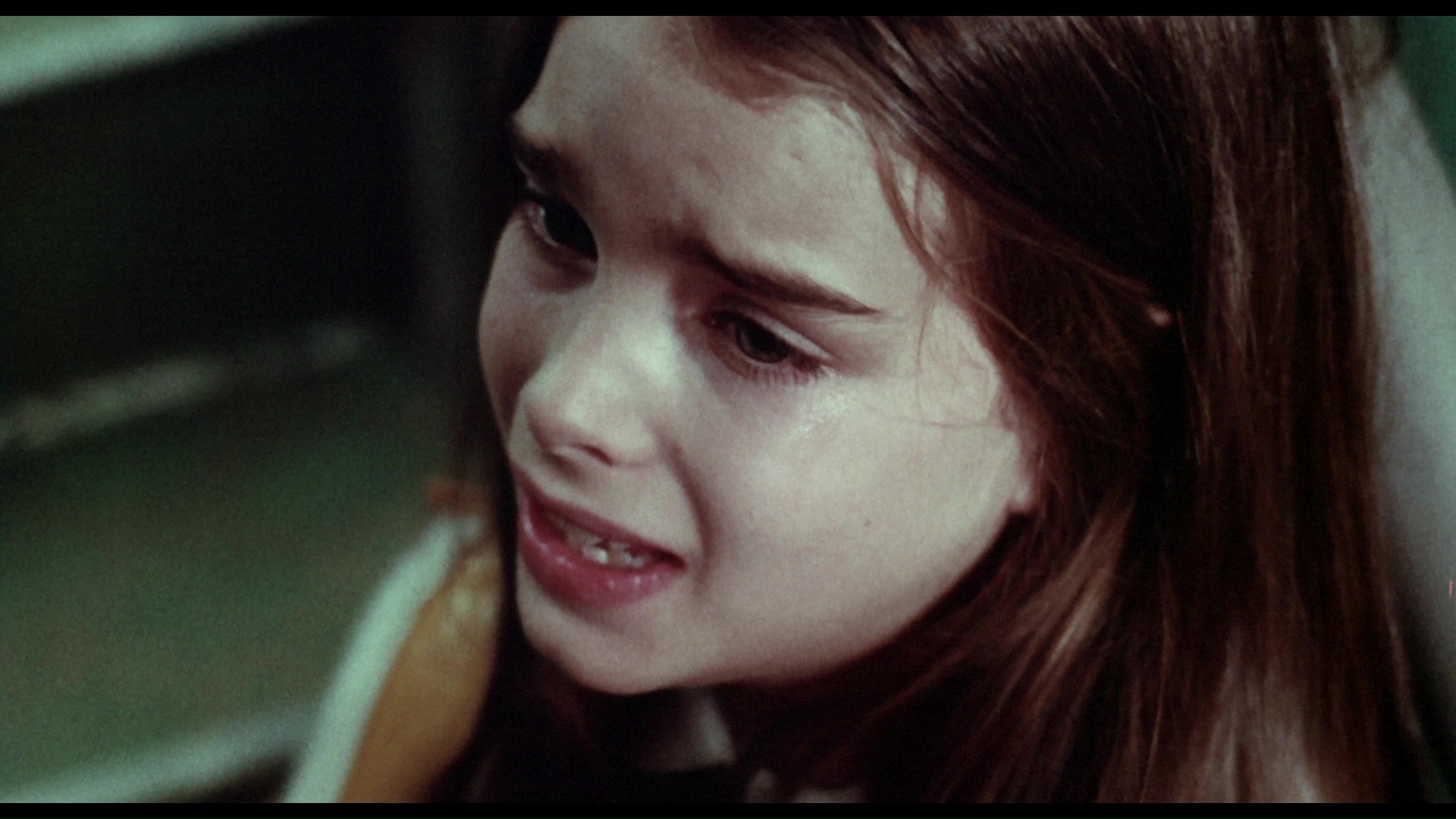
88 FILMS (DVD)
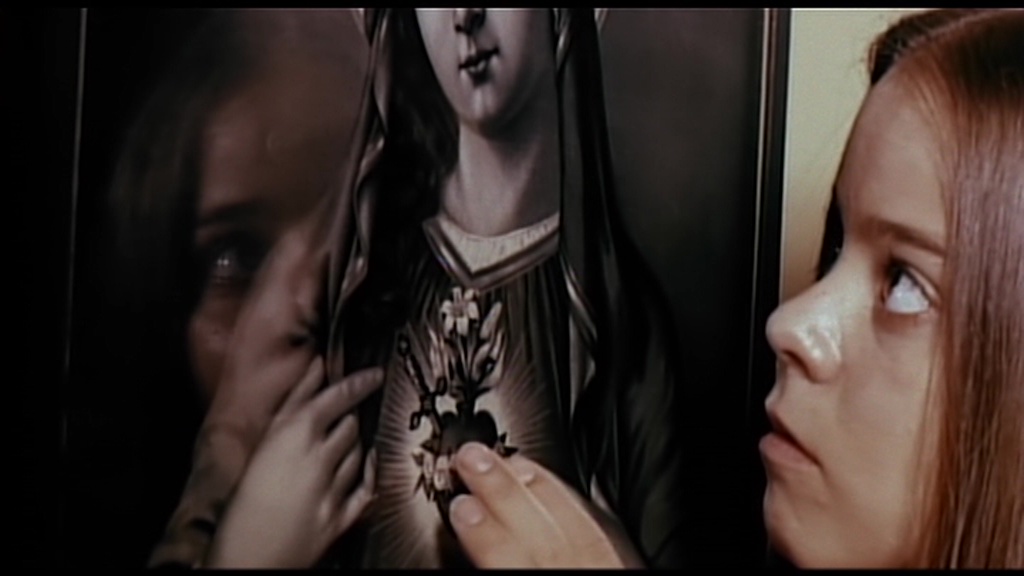
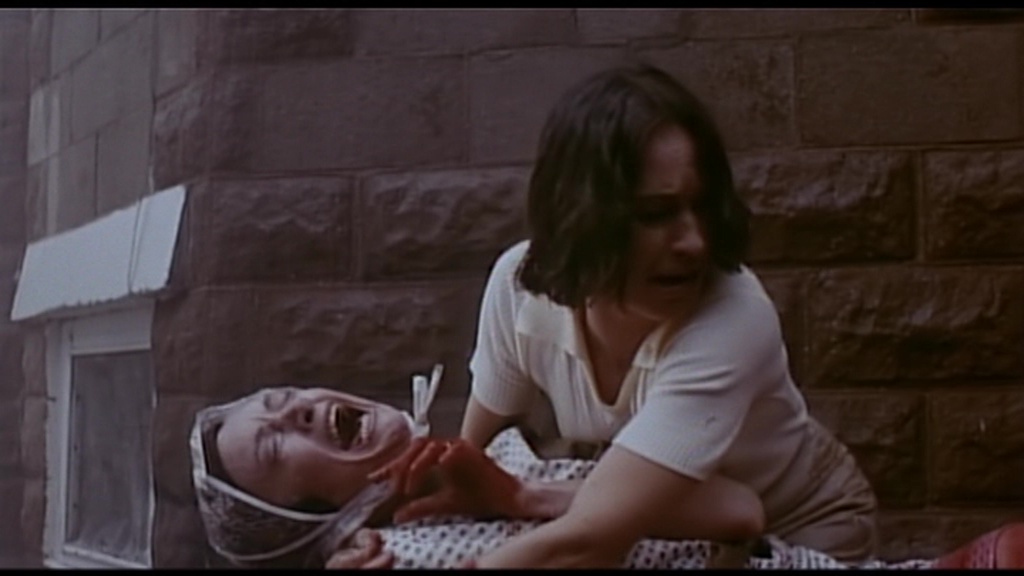
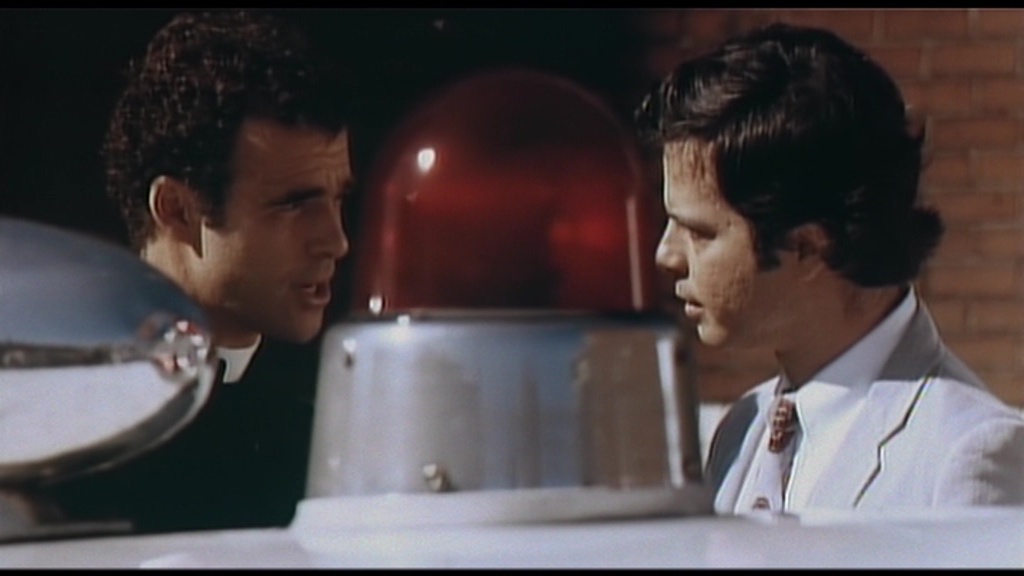
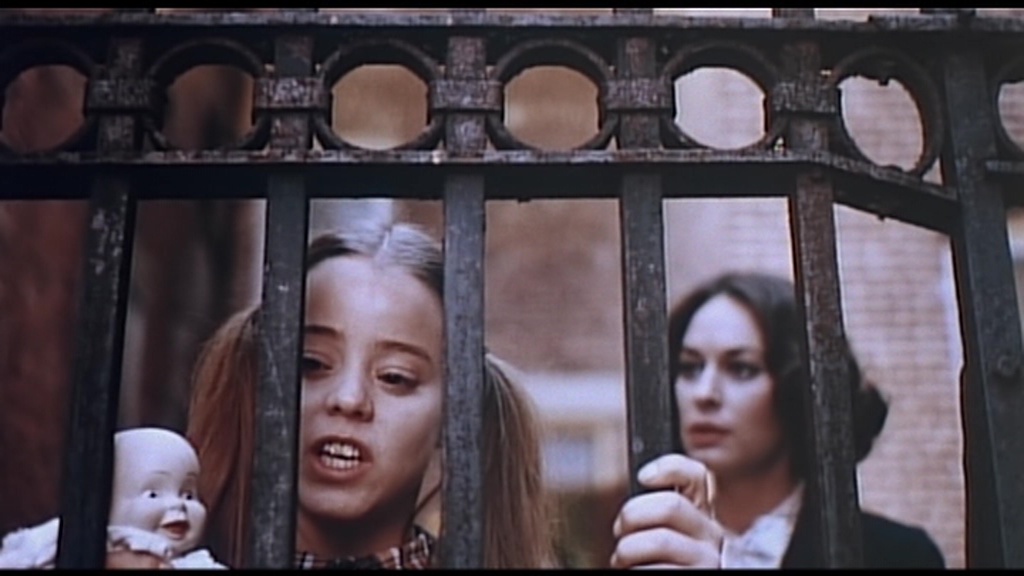
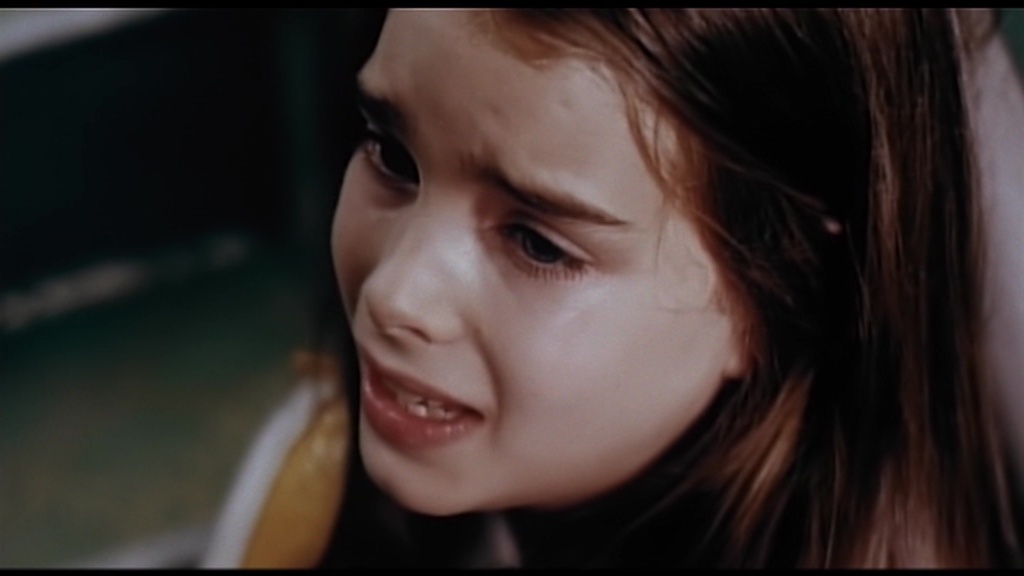
Updated review on February 1, 2025.



 bona fide case of capturing
bona fide case of capturing  cinematic lightning in a bottle, this New Jersey-shot precursor to the slasher craze is an example of every element aligning perfectly to create one of the best horror films of the '70s, American or otherwise. Originally made as Communion and later issued under its most famous title, Alice, Sweet Alice (and in a reworked 1981 reissue as Holy Terror), this caustic little gem has finally managed to build a reputation for itself far outside the mere presence of child star Brooke Shields in a small supporting role.
cinematic lightning in a bottle, this New Jersey-shot precursor to the slasher craze is an example of every element aligning perfectly to create one of the best horror films of the '70s, American or otherwise. Originally made as Communion and later issued under its most famous title, Alice, Sweet Alice (and in a reworked 1981 reissue as Holy Terror), this caustic little gem has finally managed to build a reputation for itself far outside the mere presence of child star Brooke Shields in a small supporting role.



























